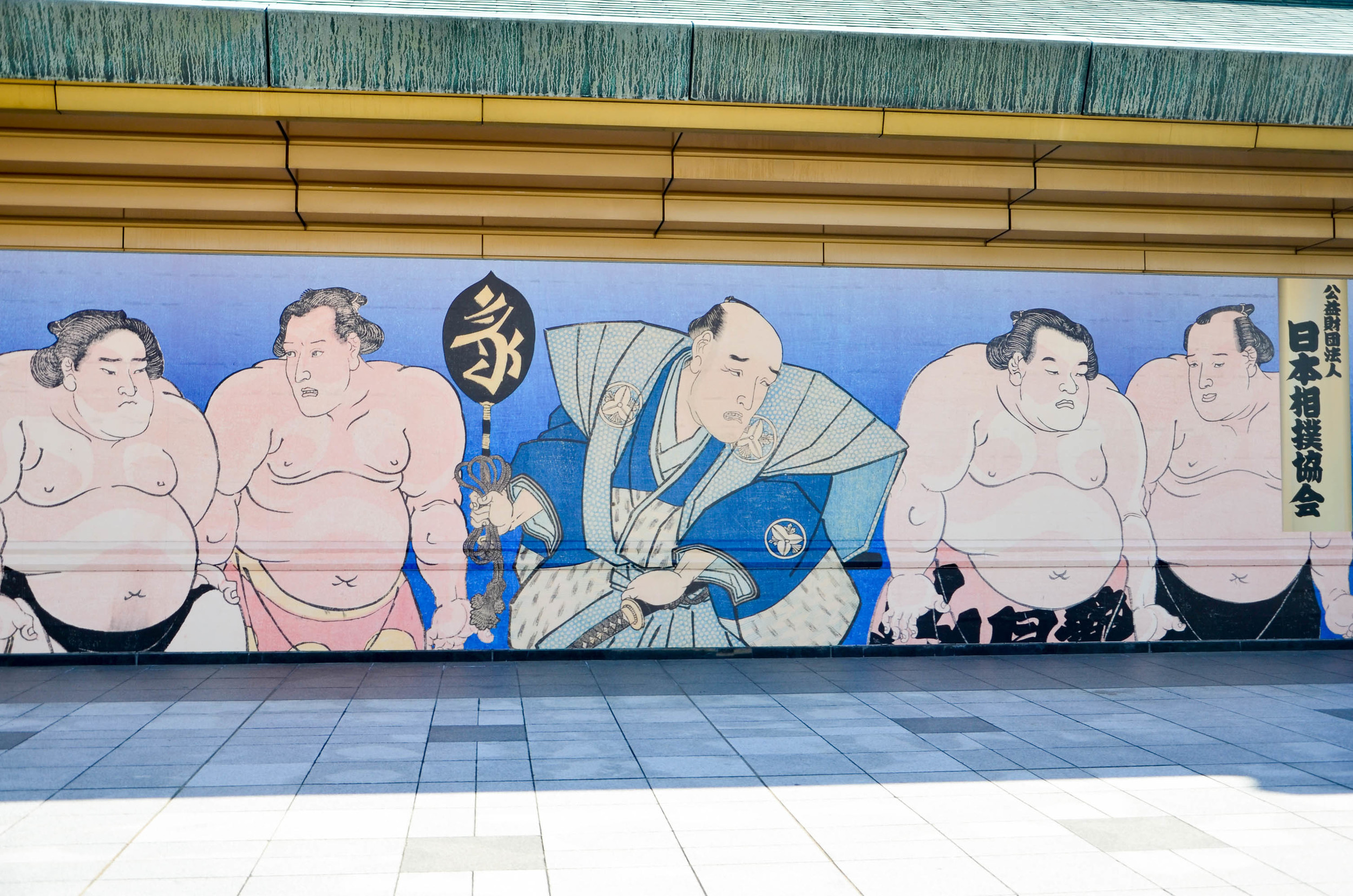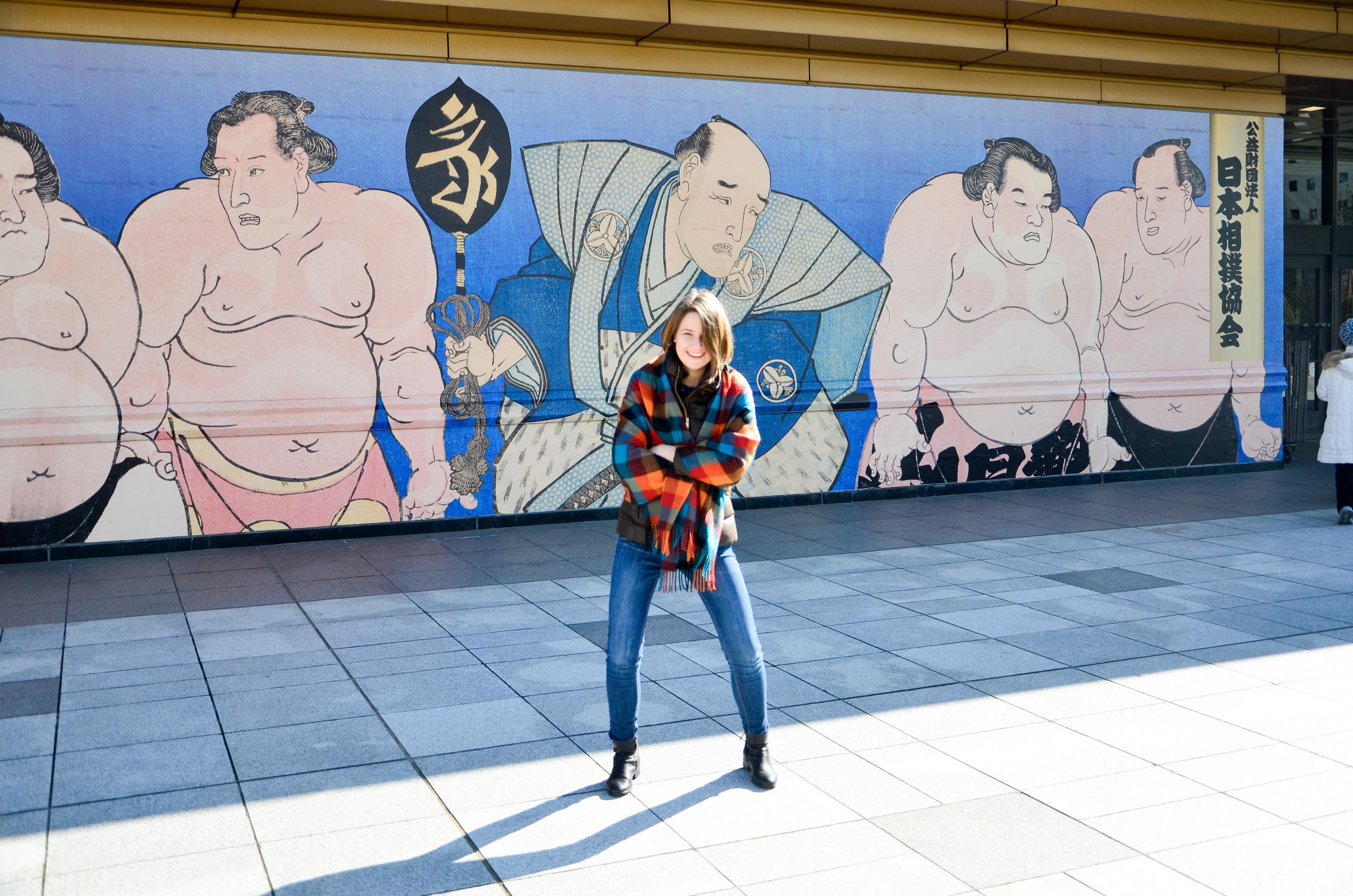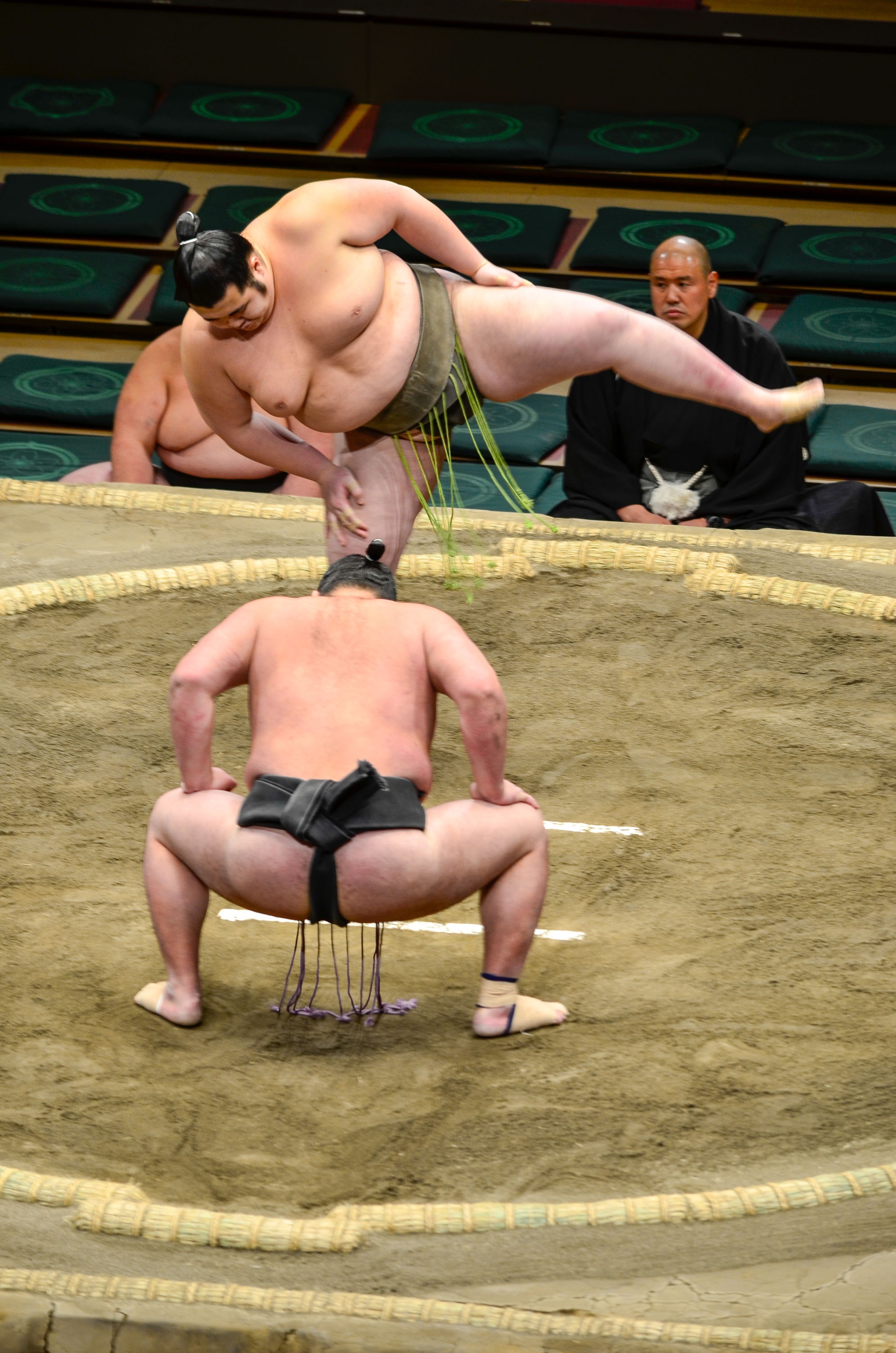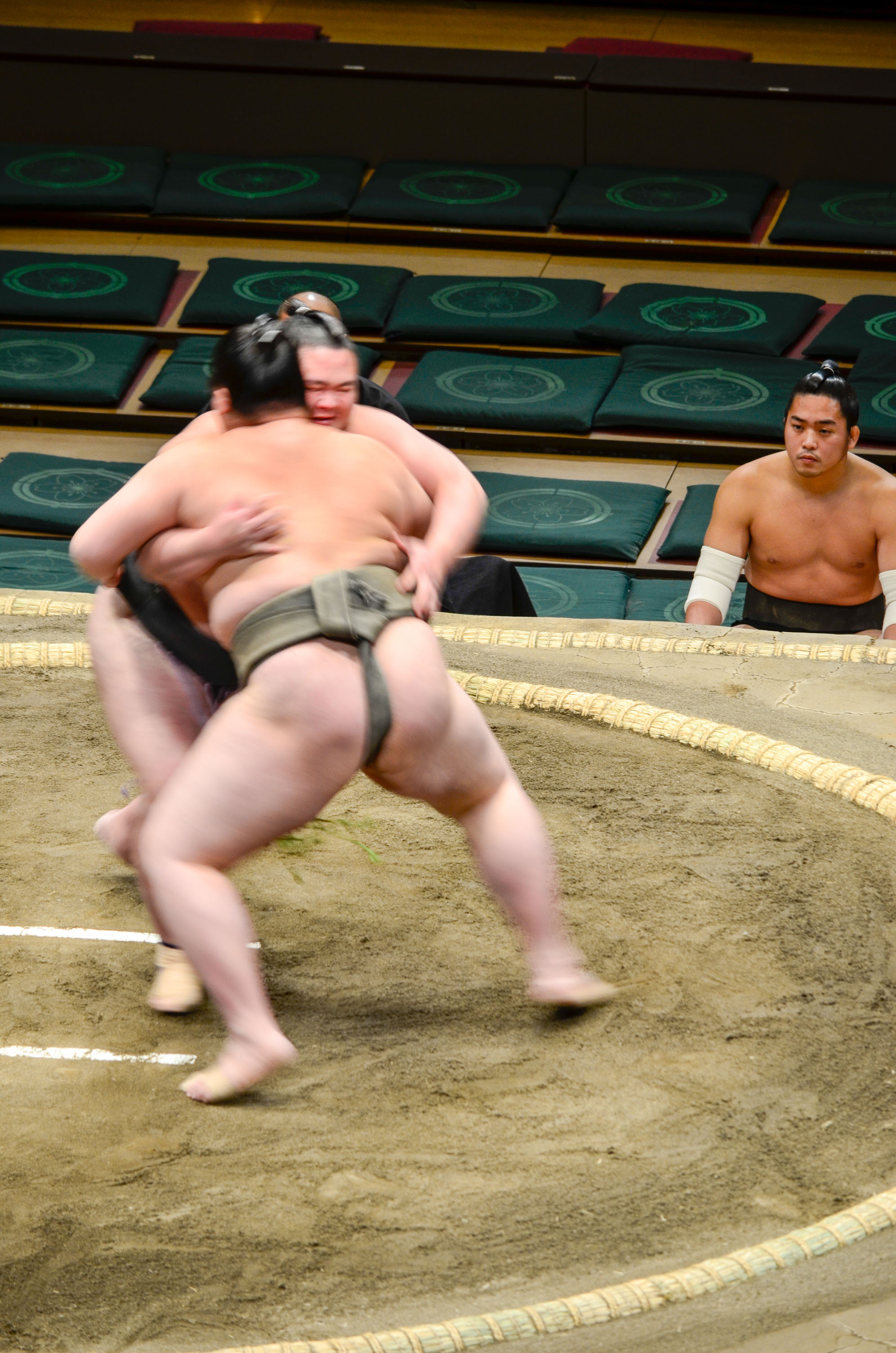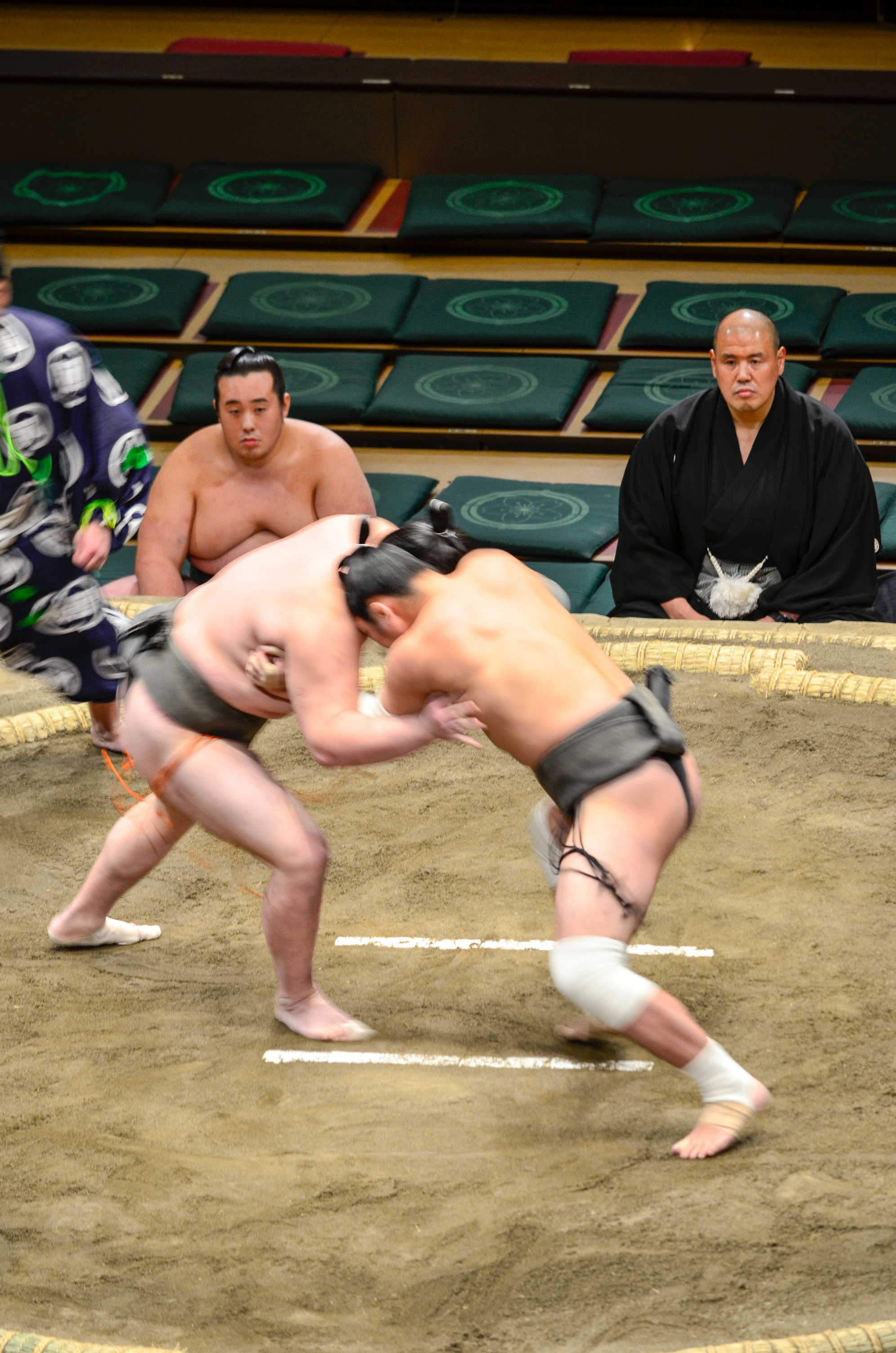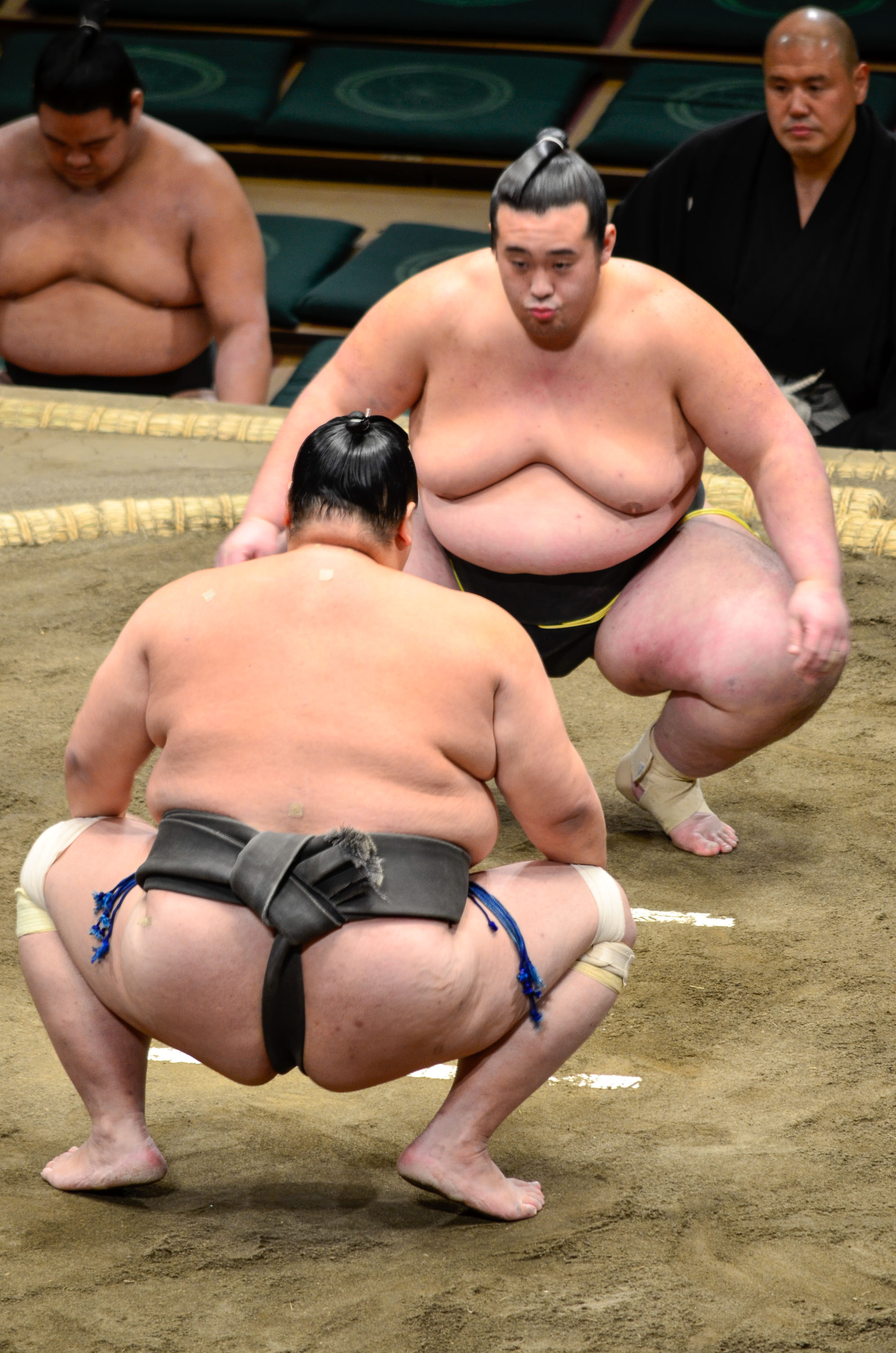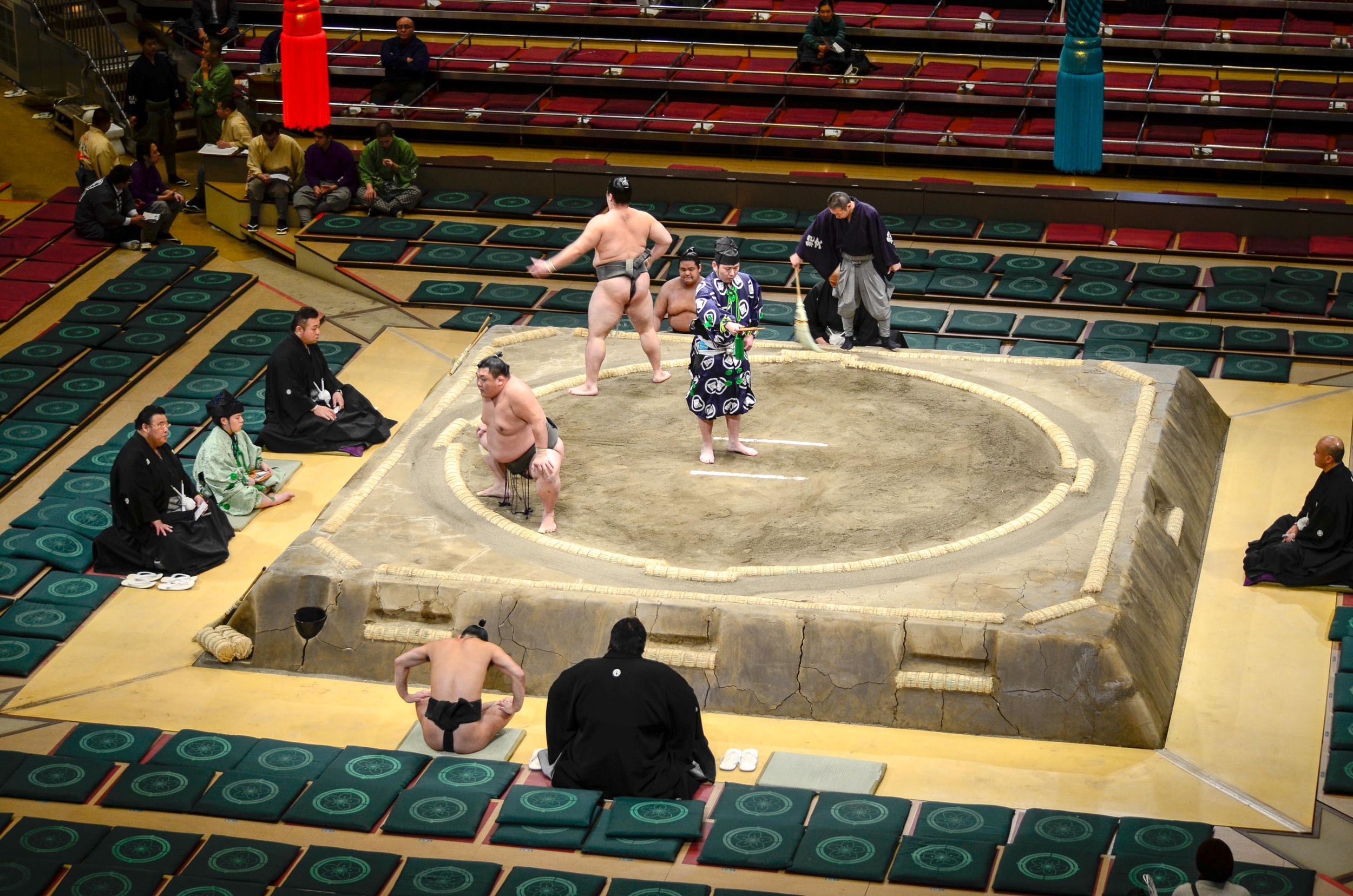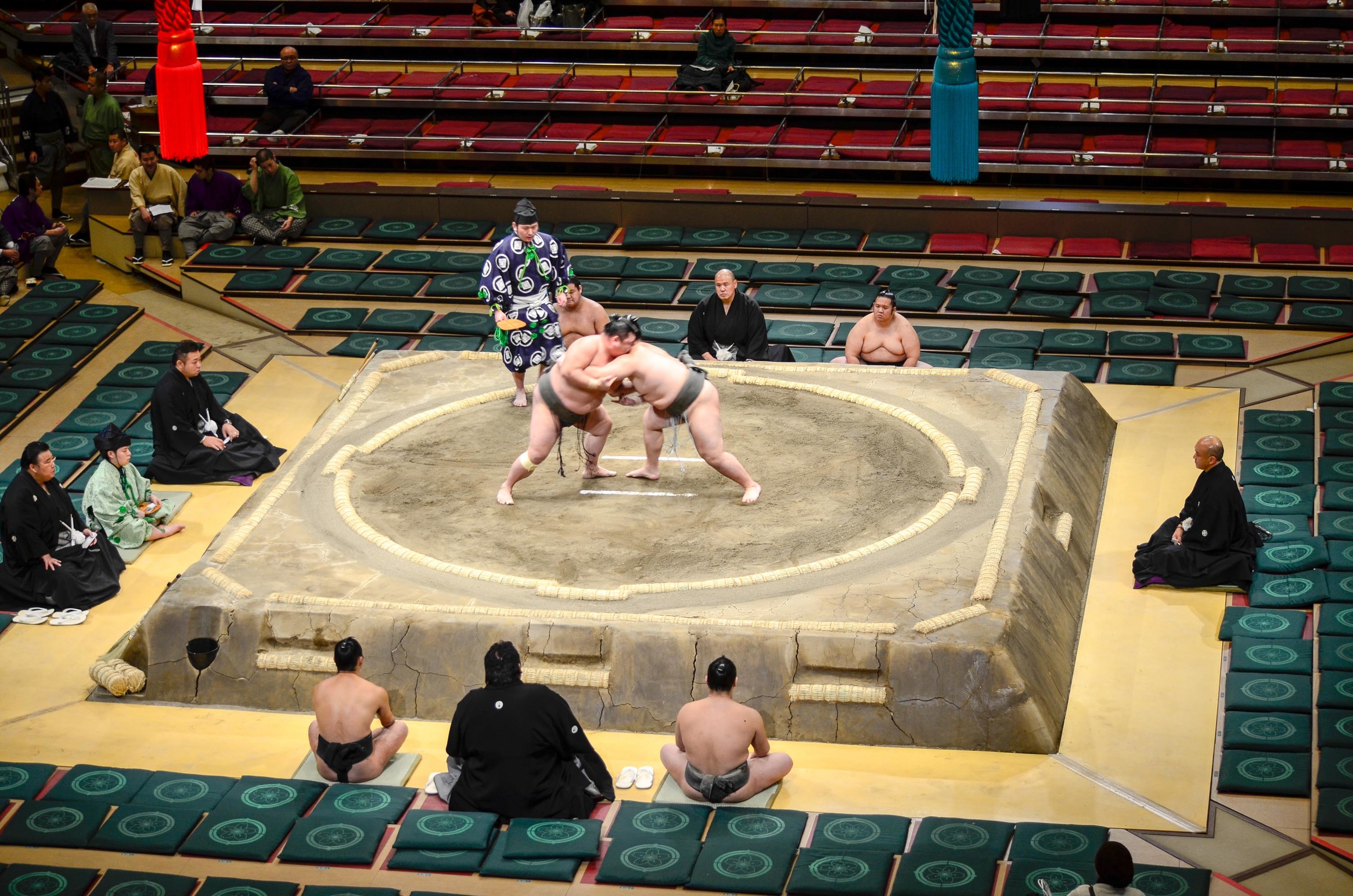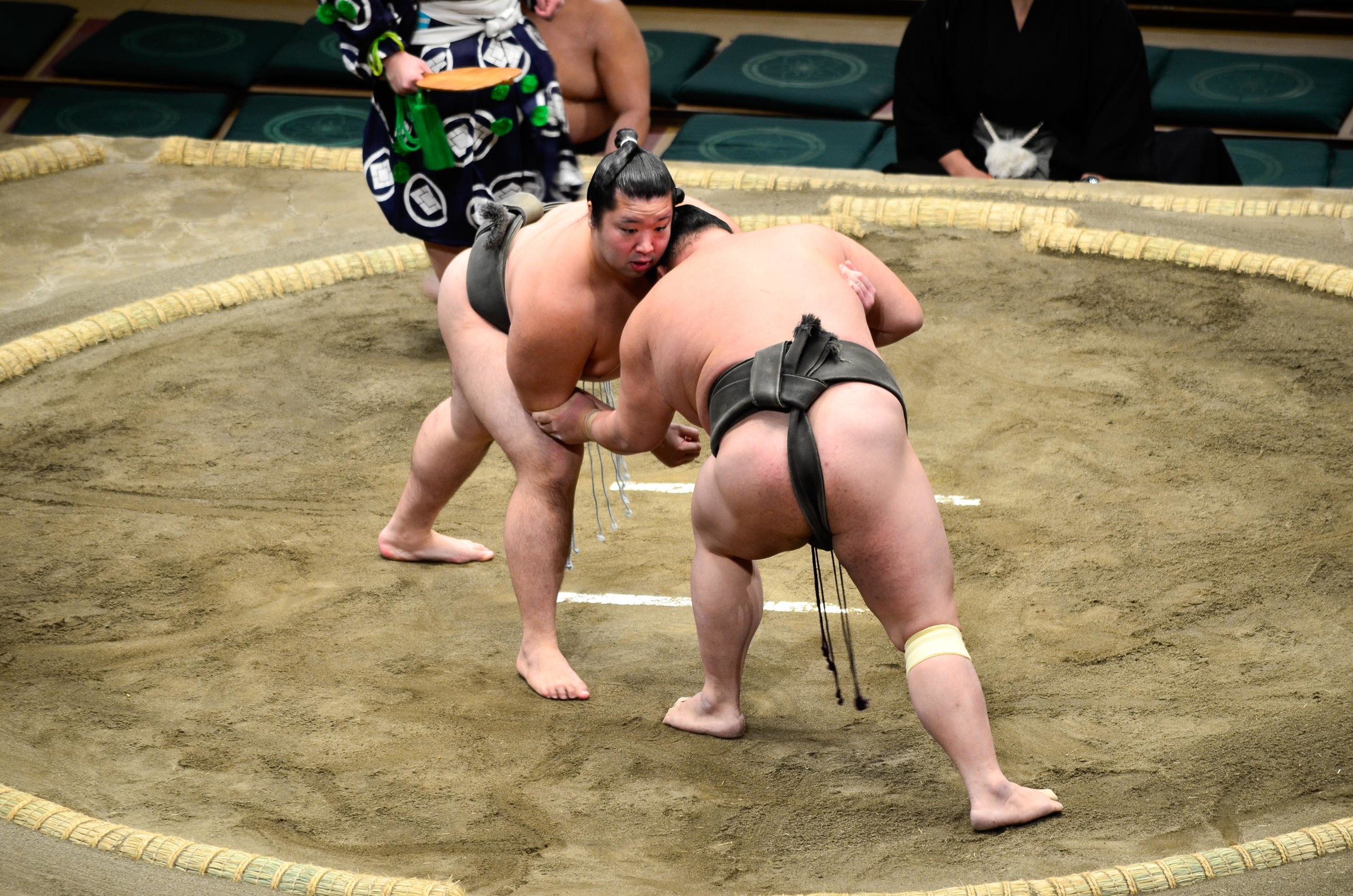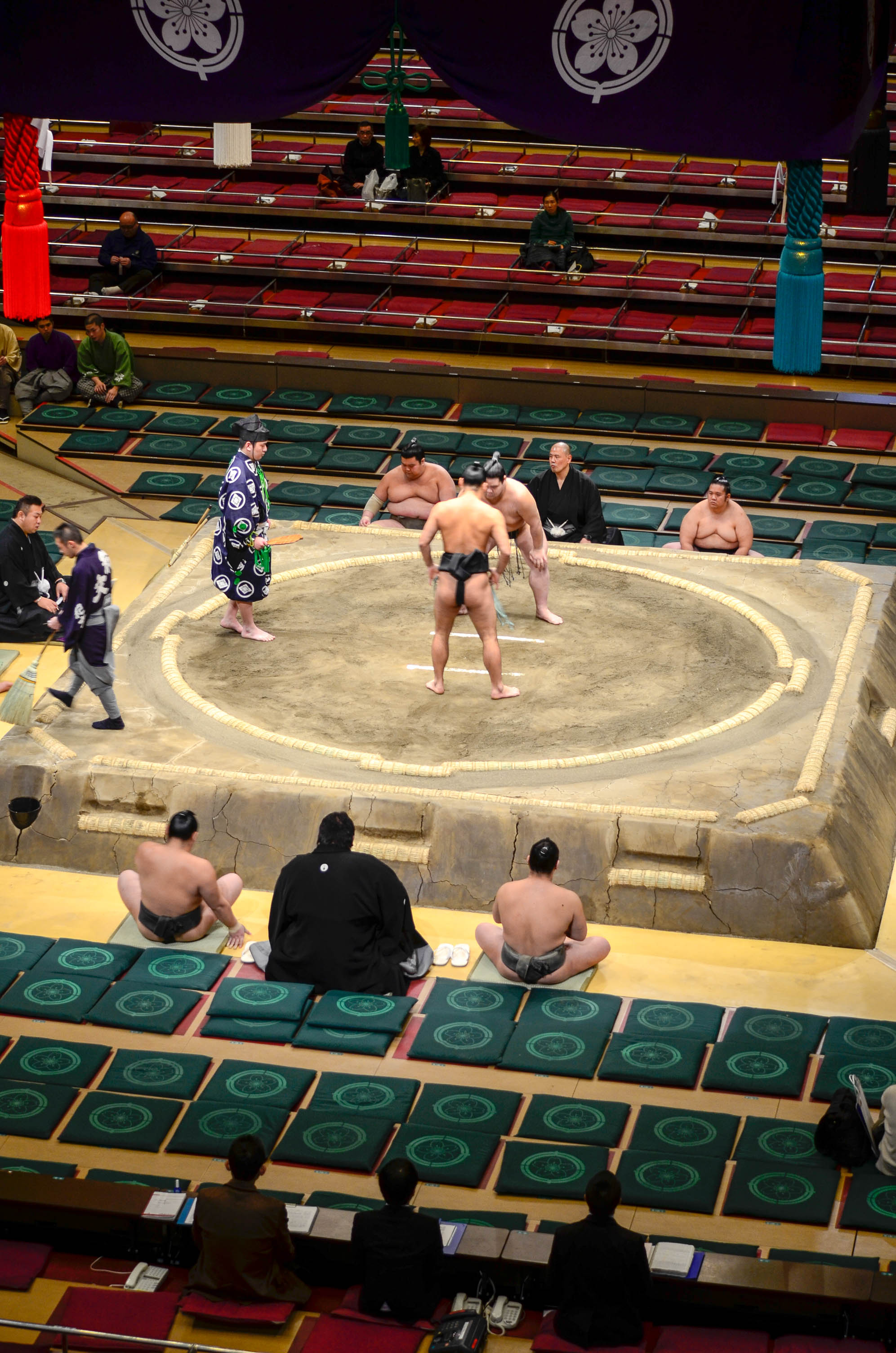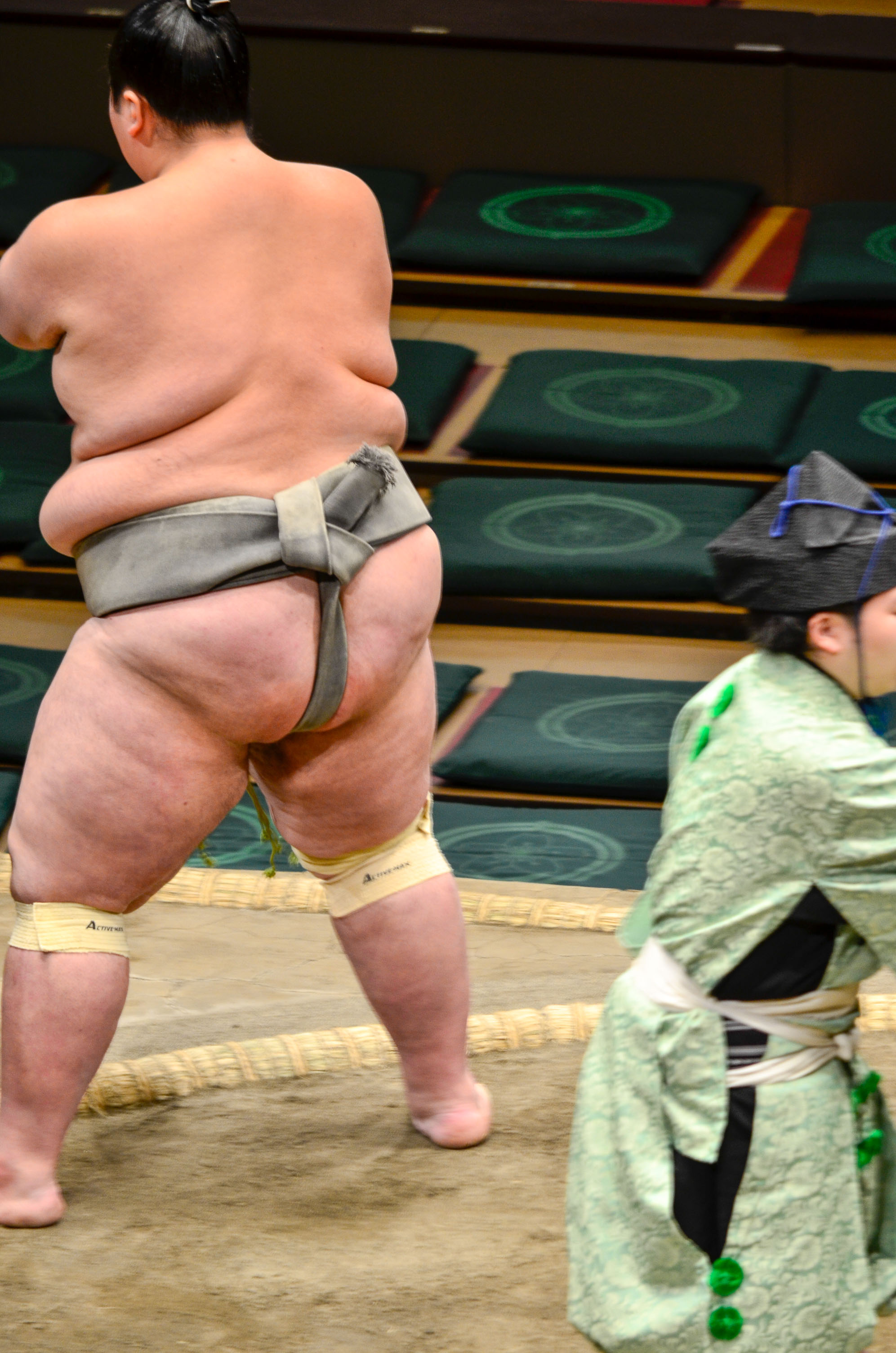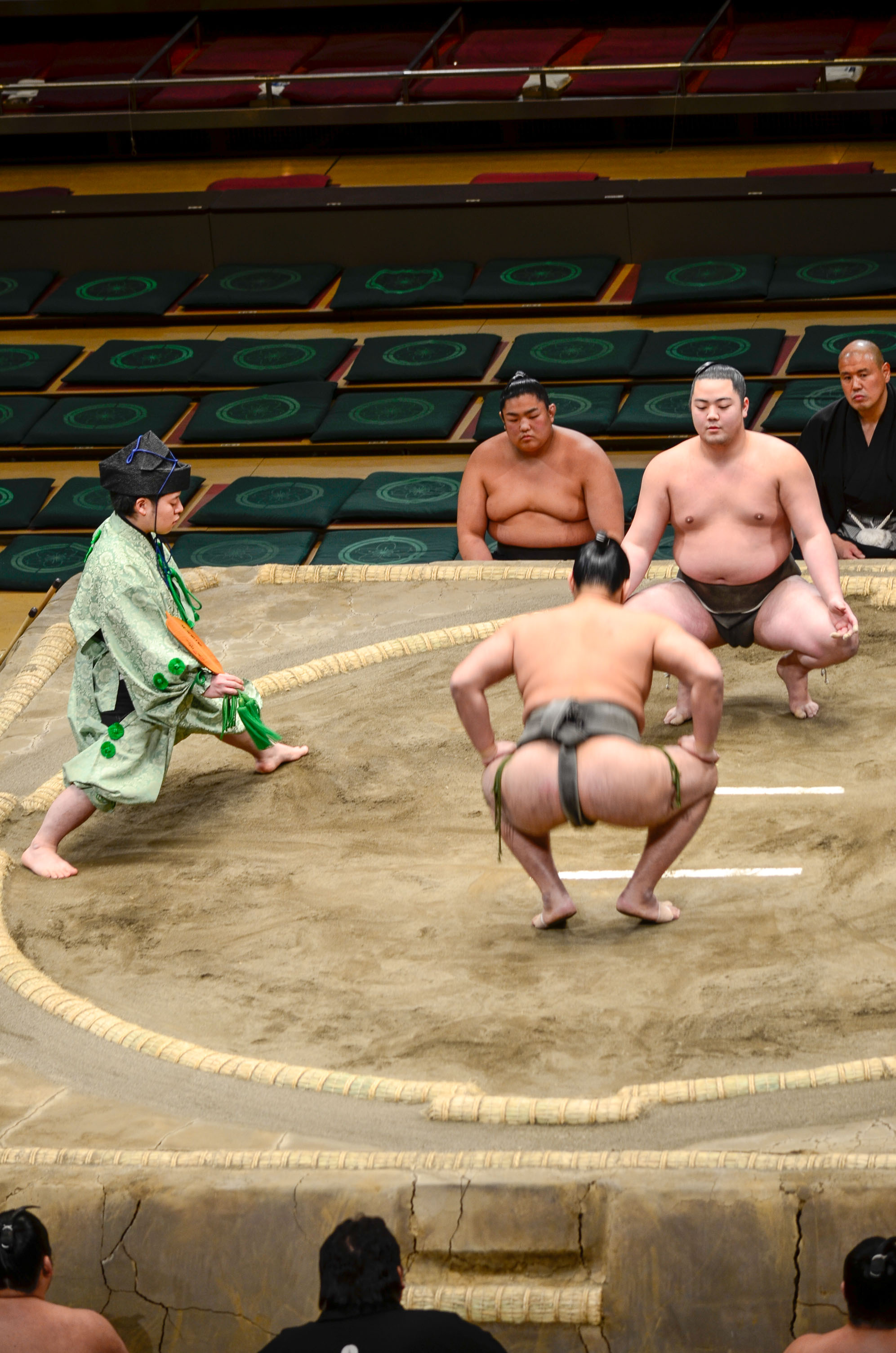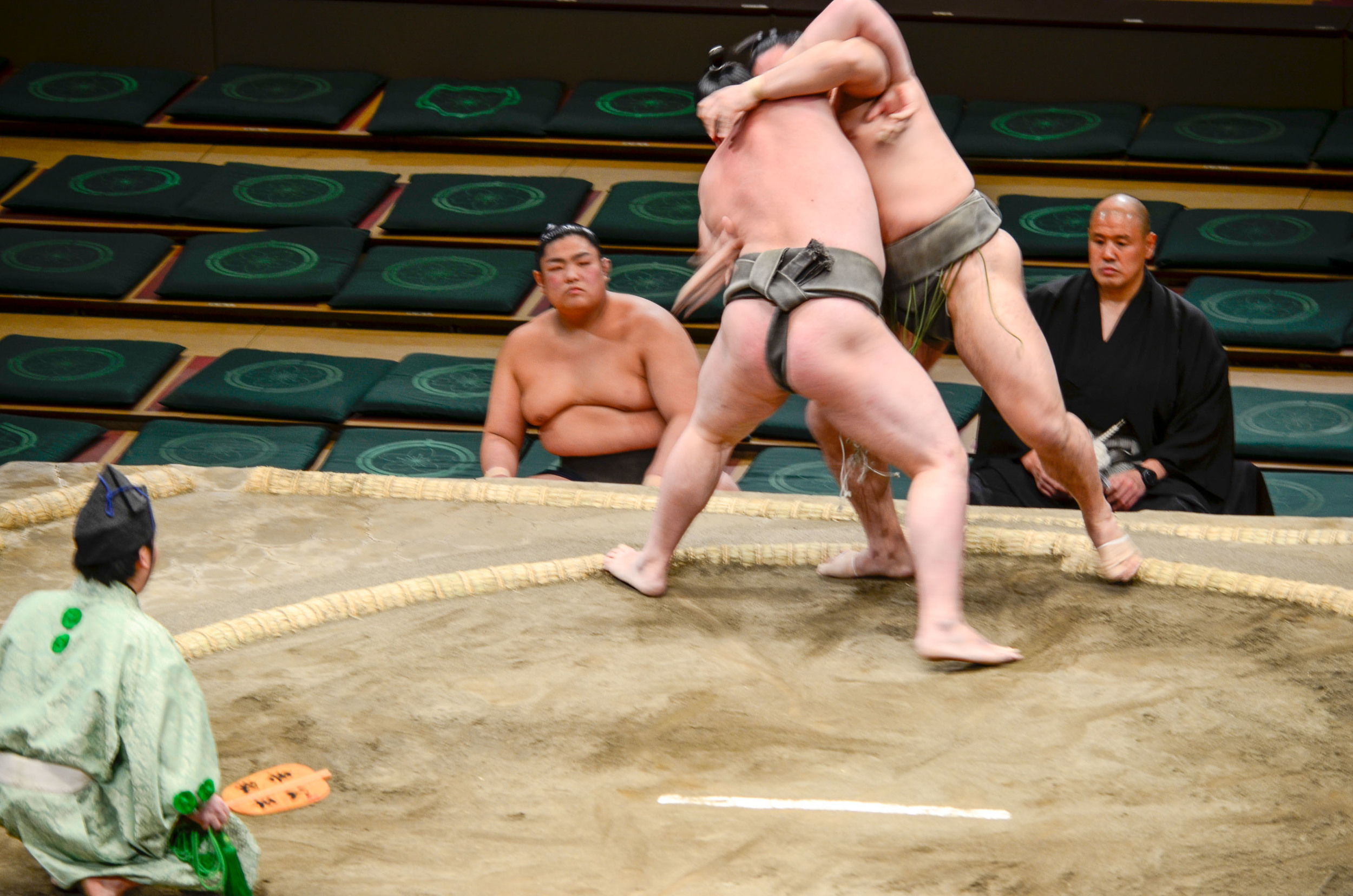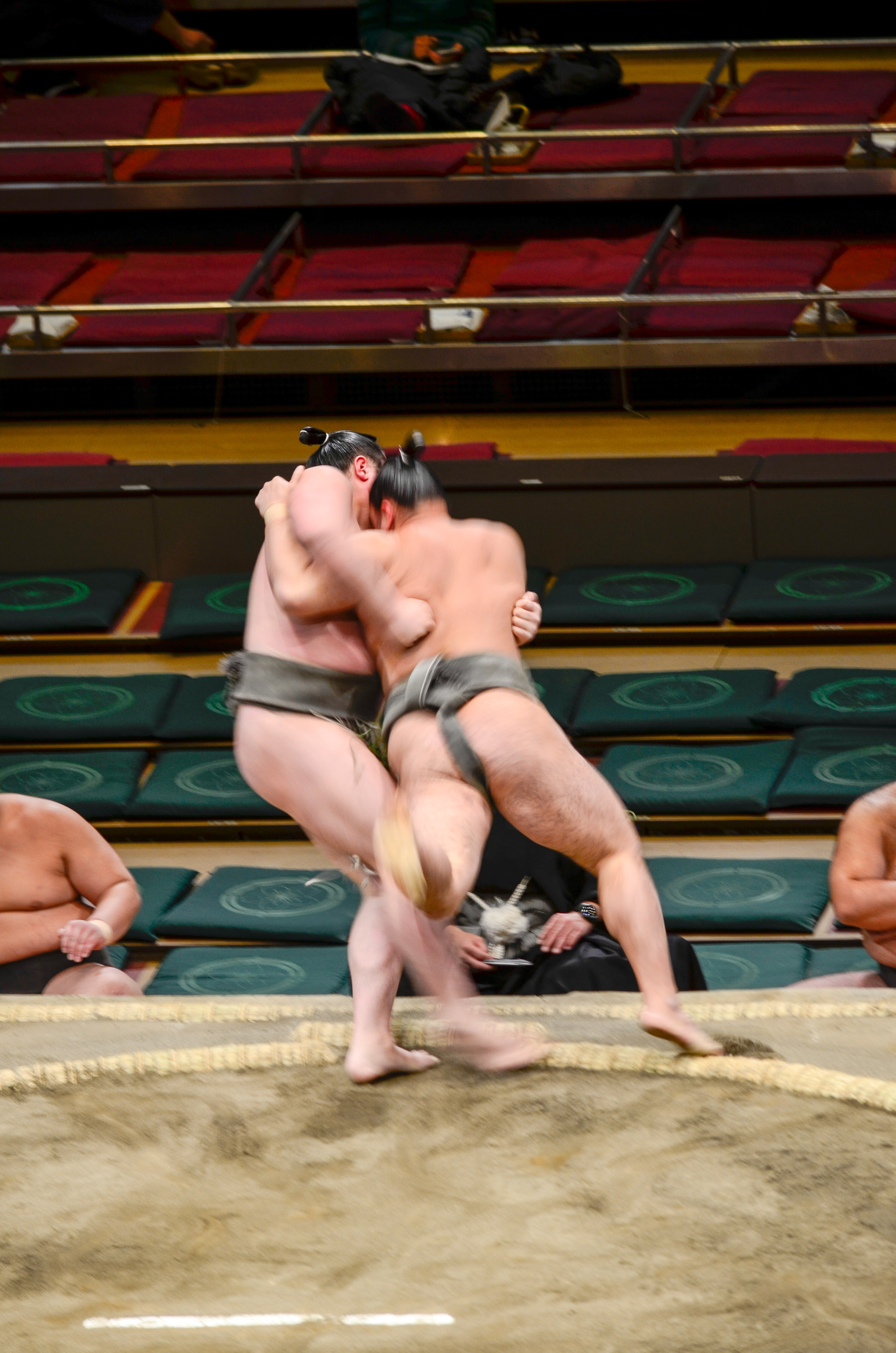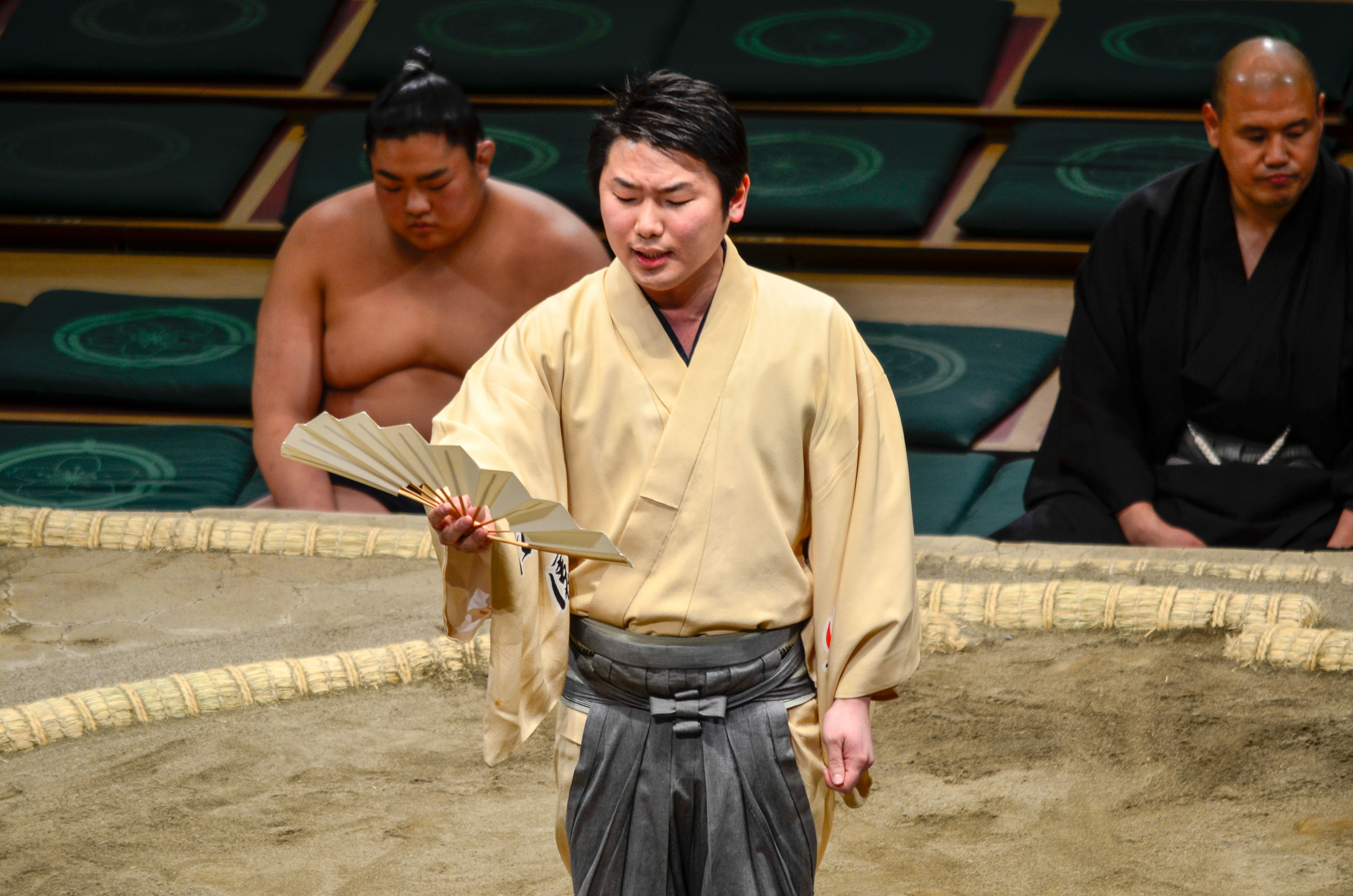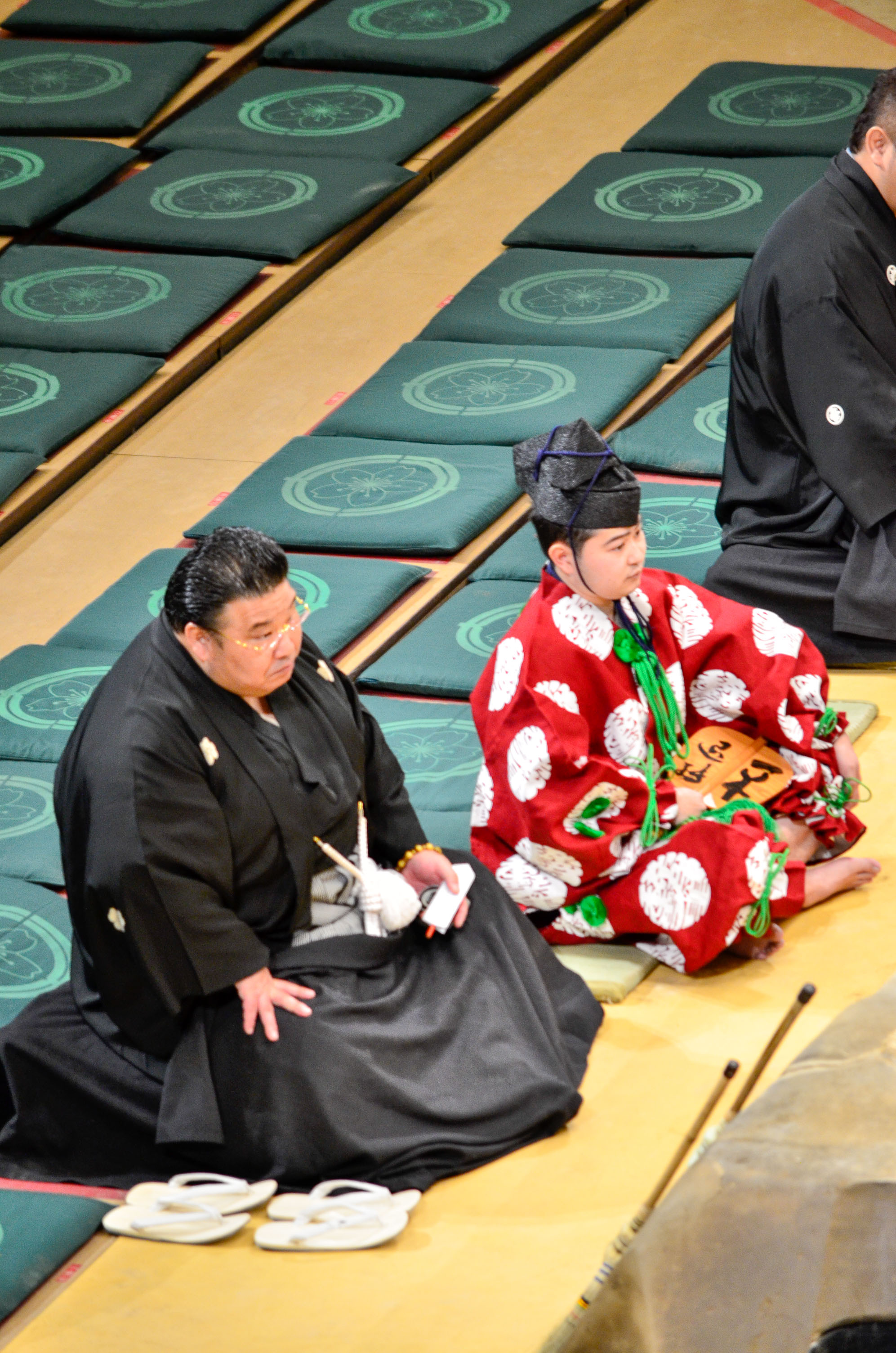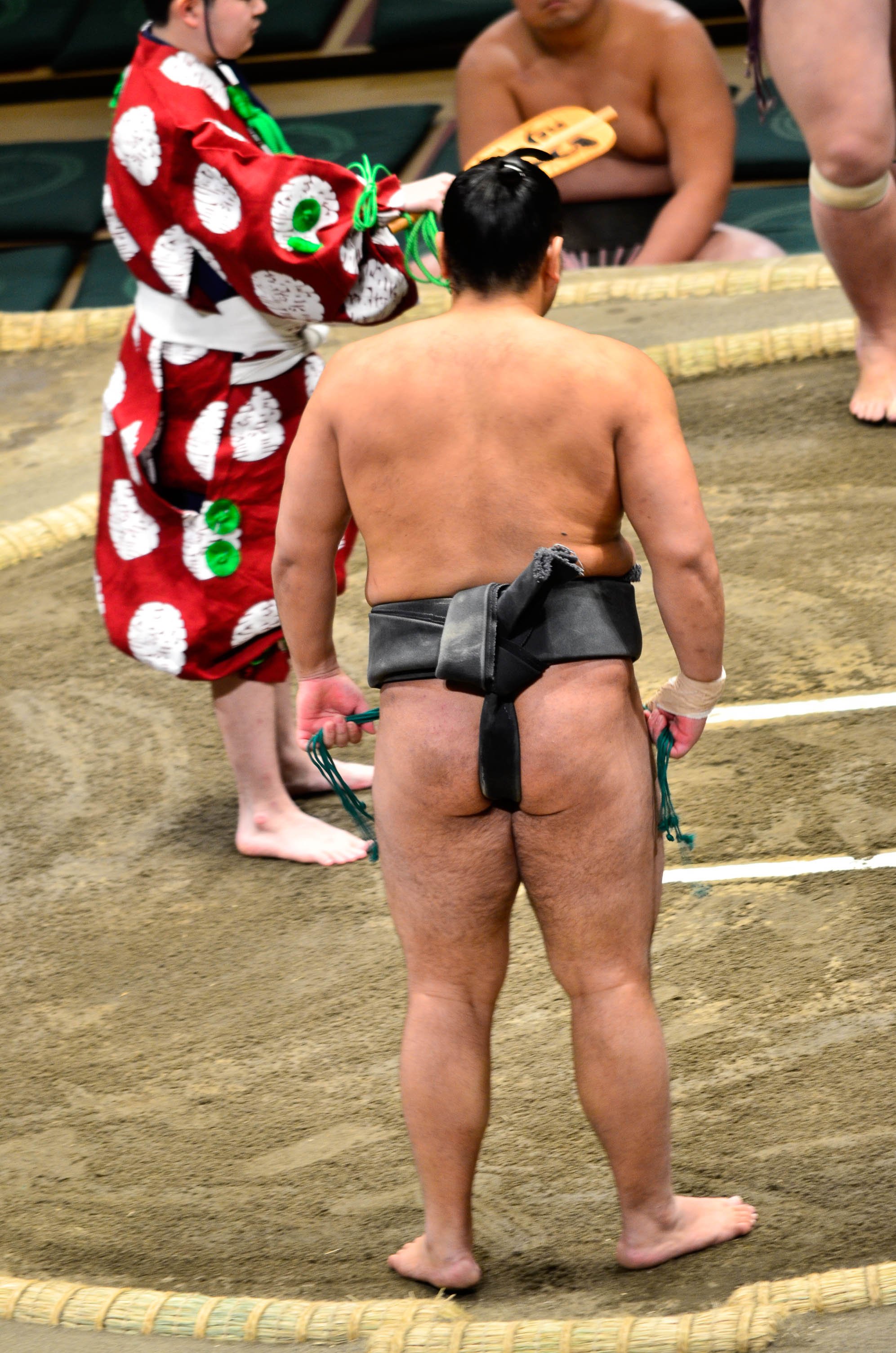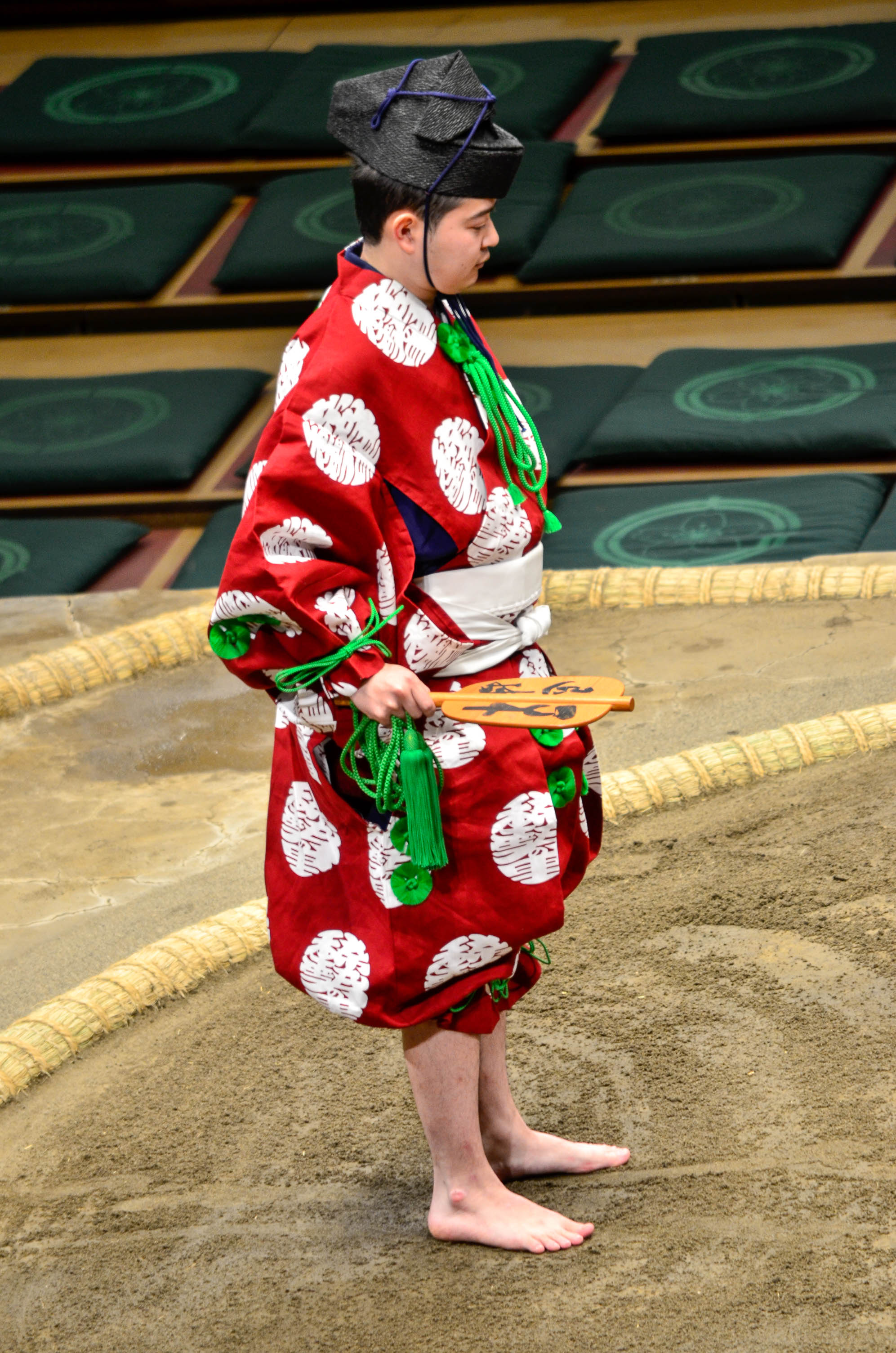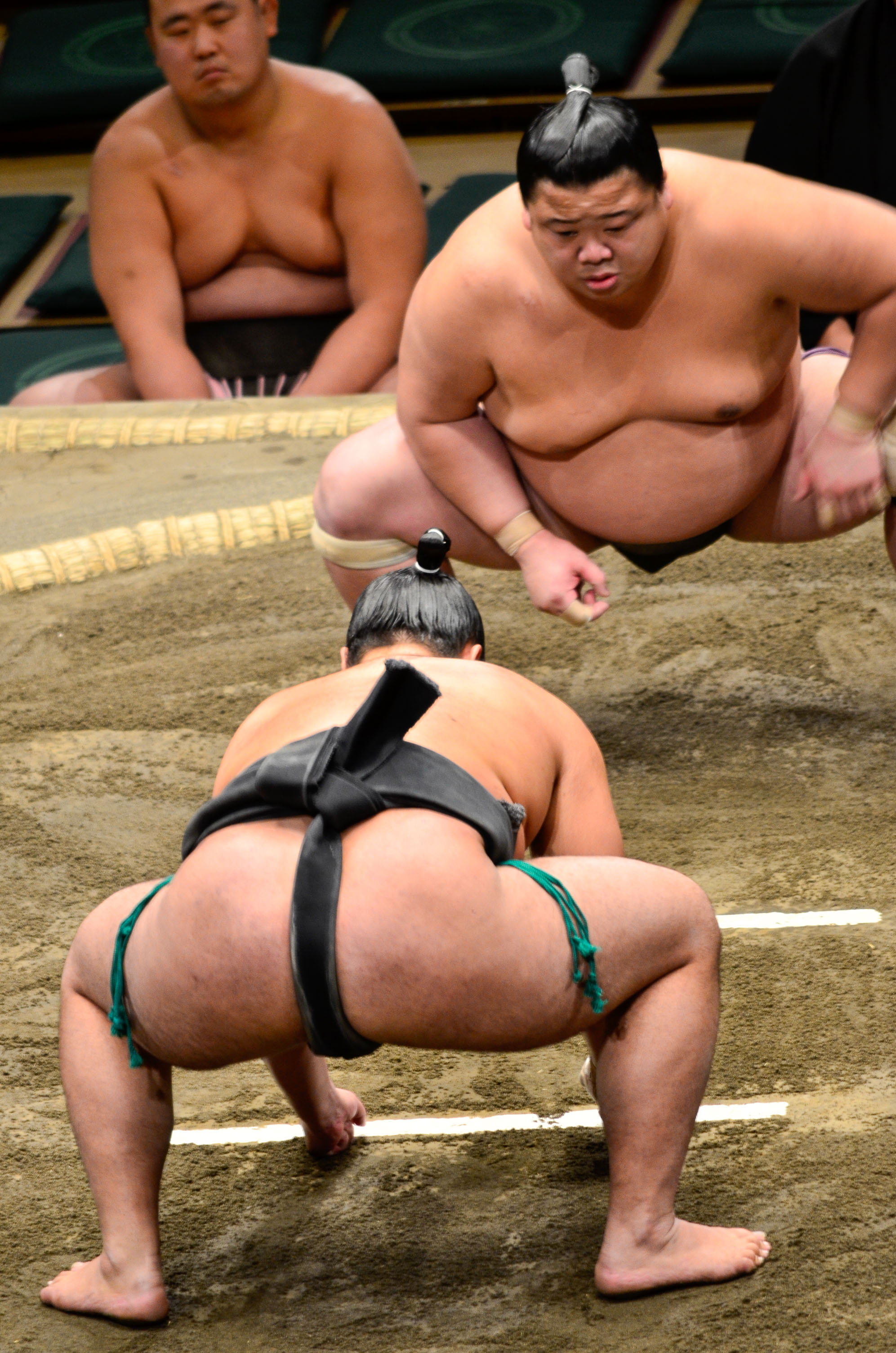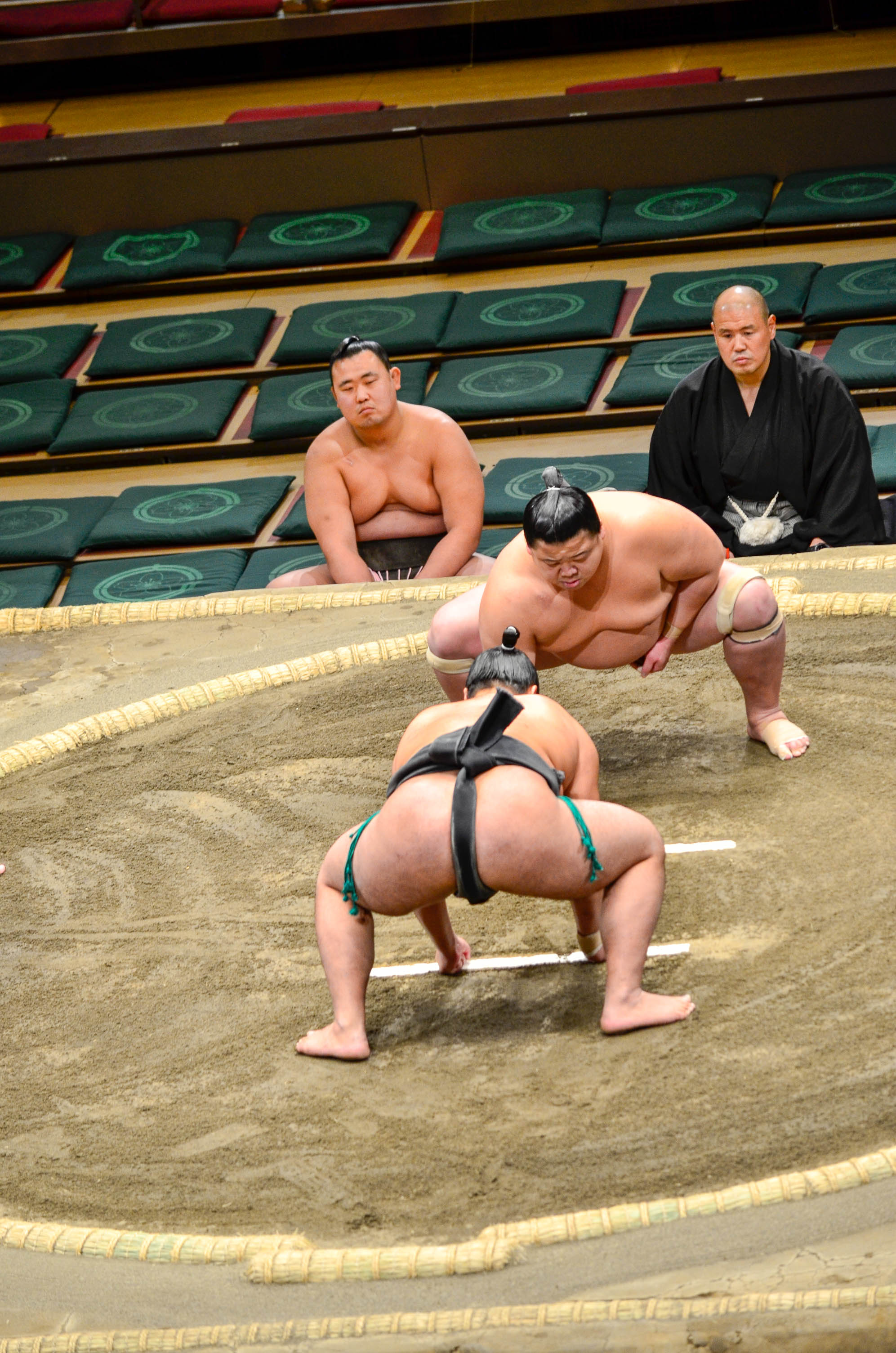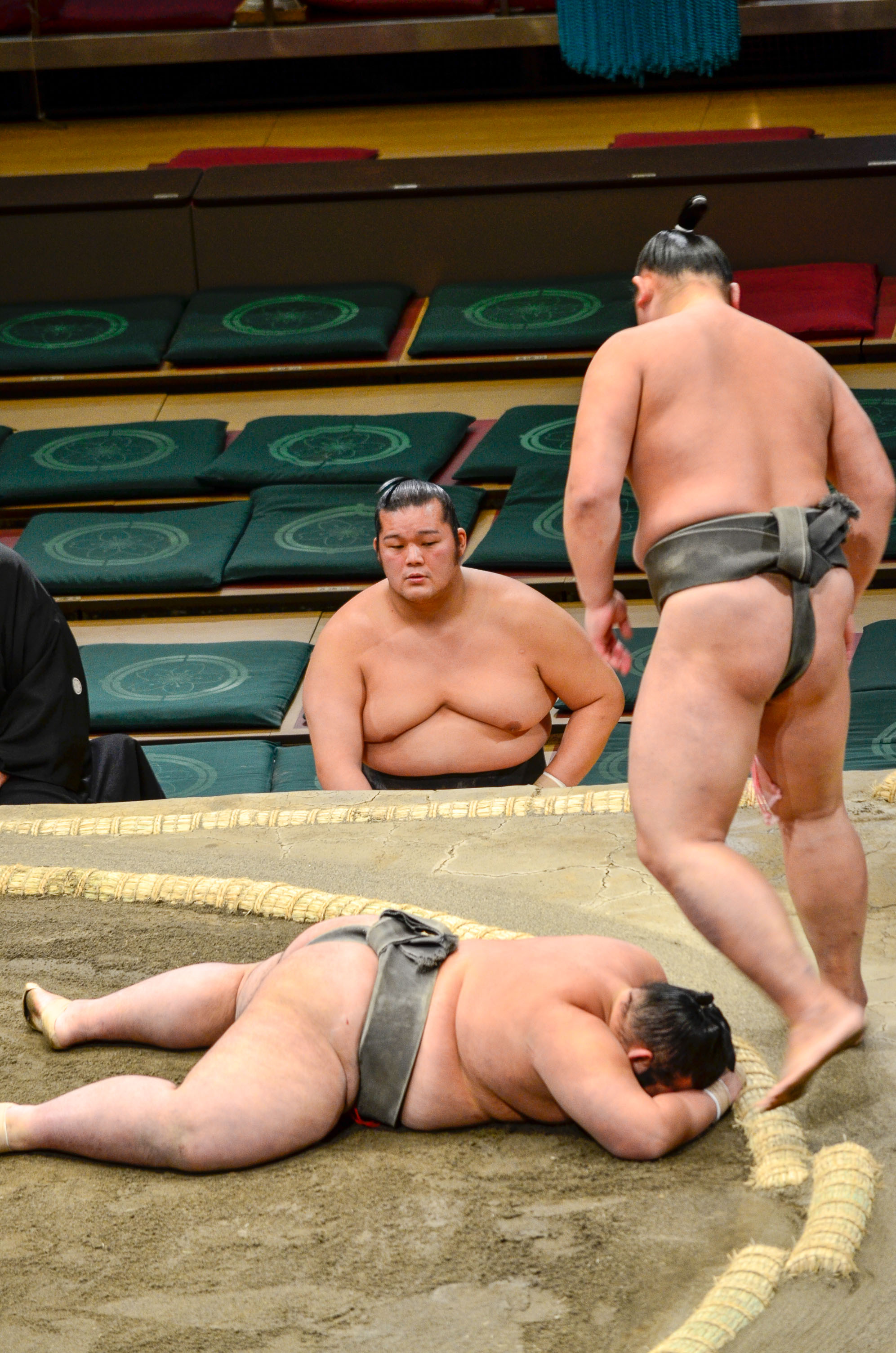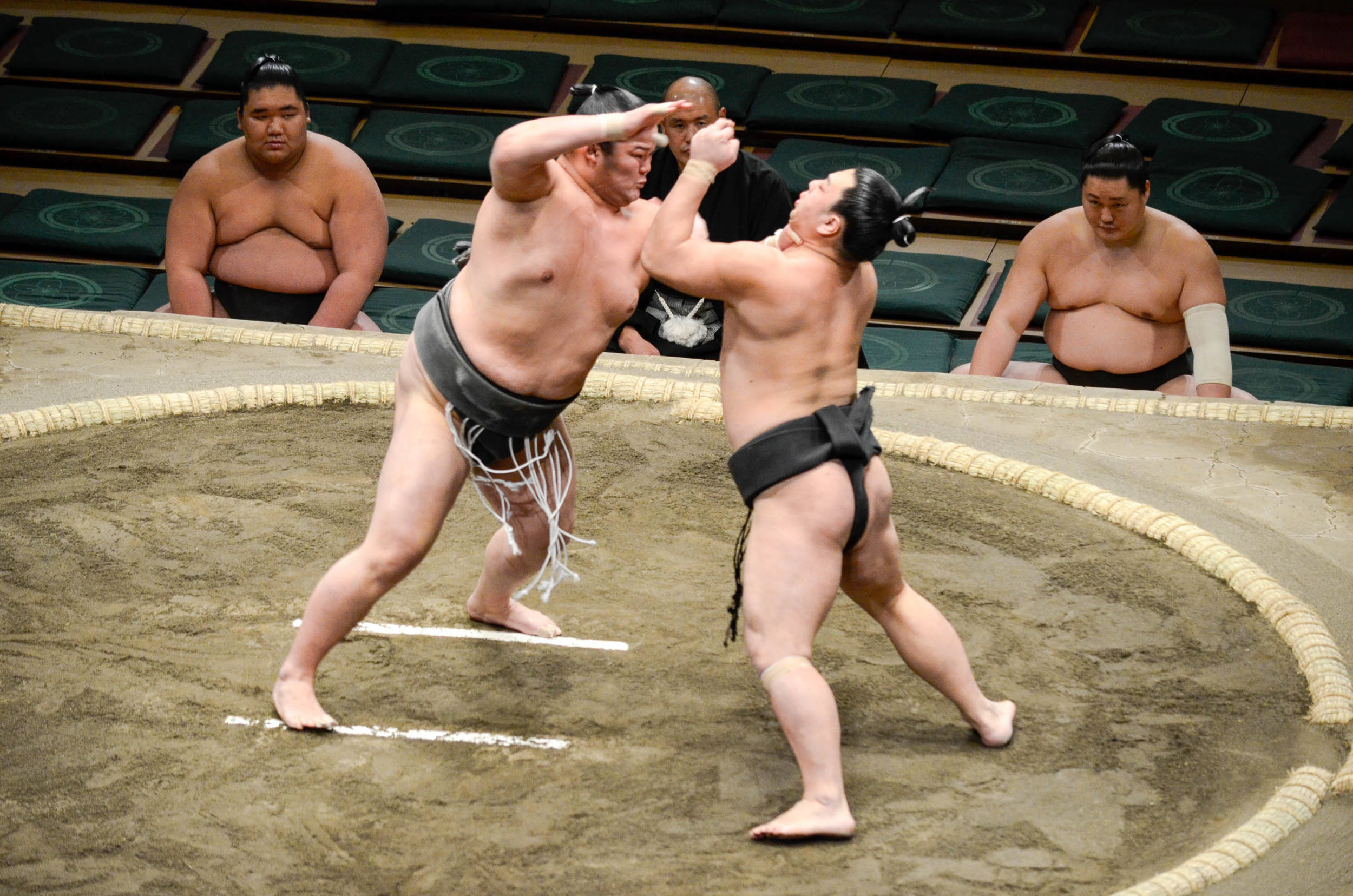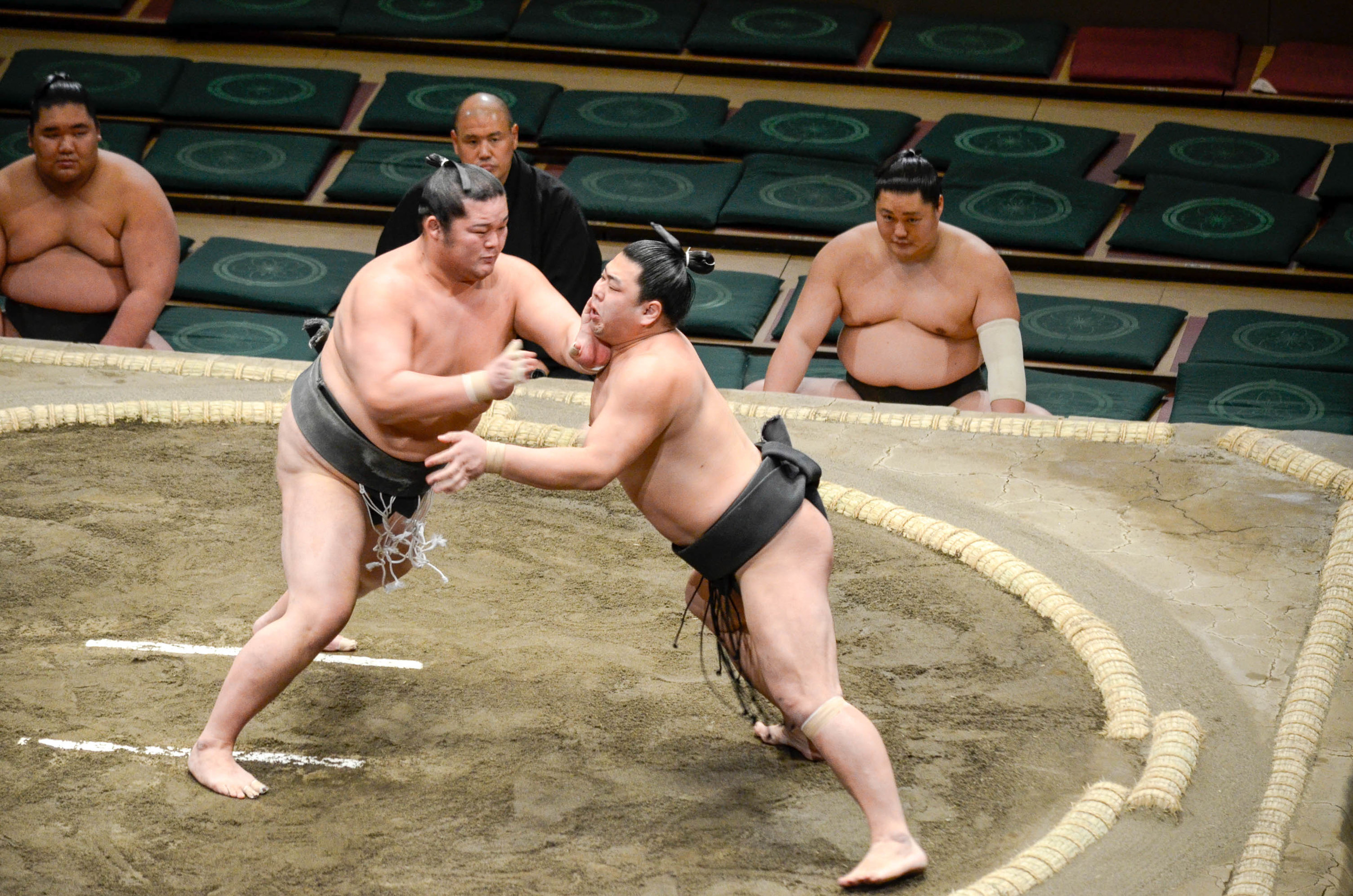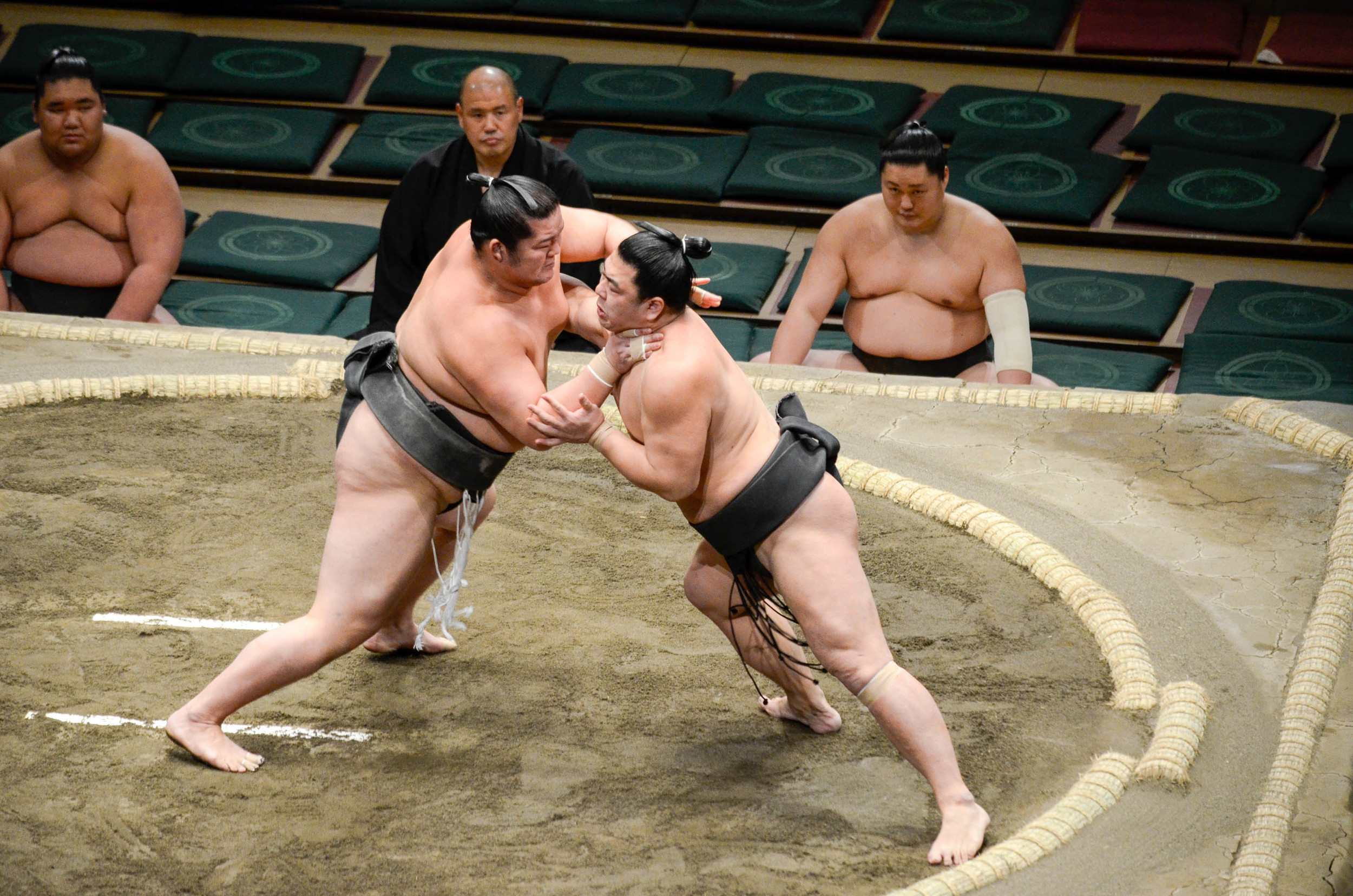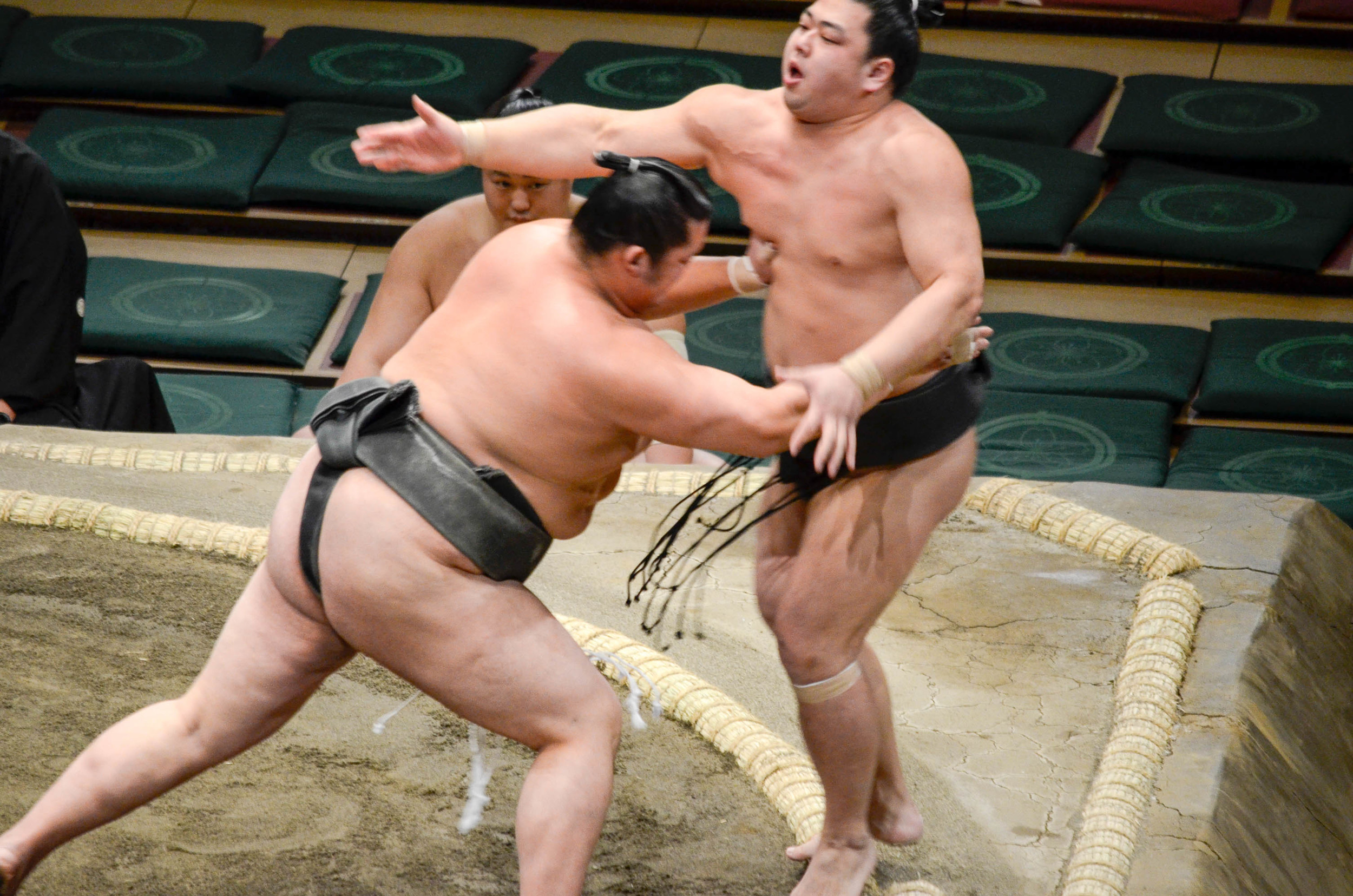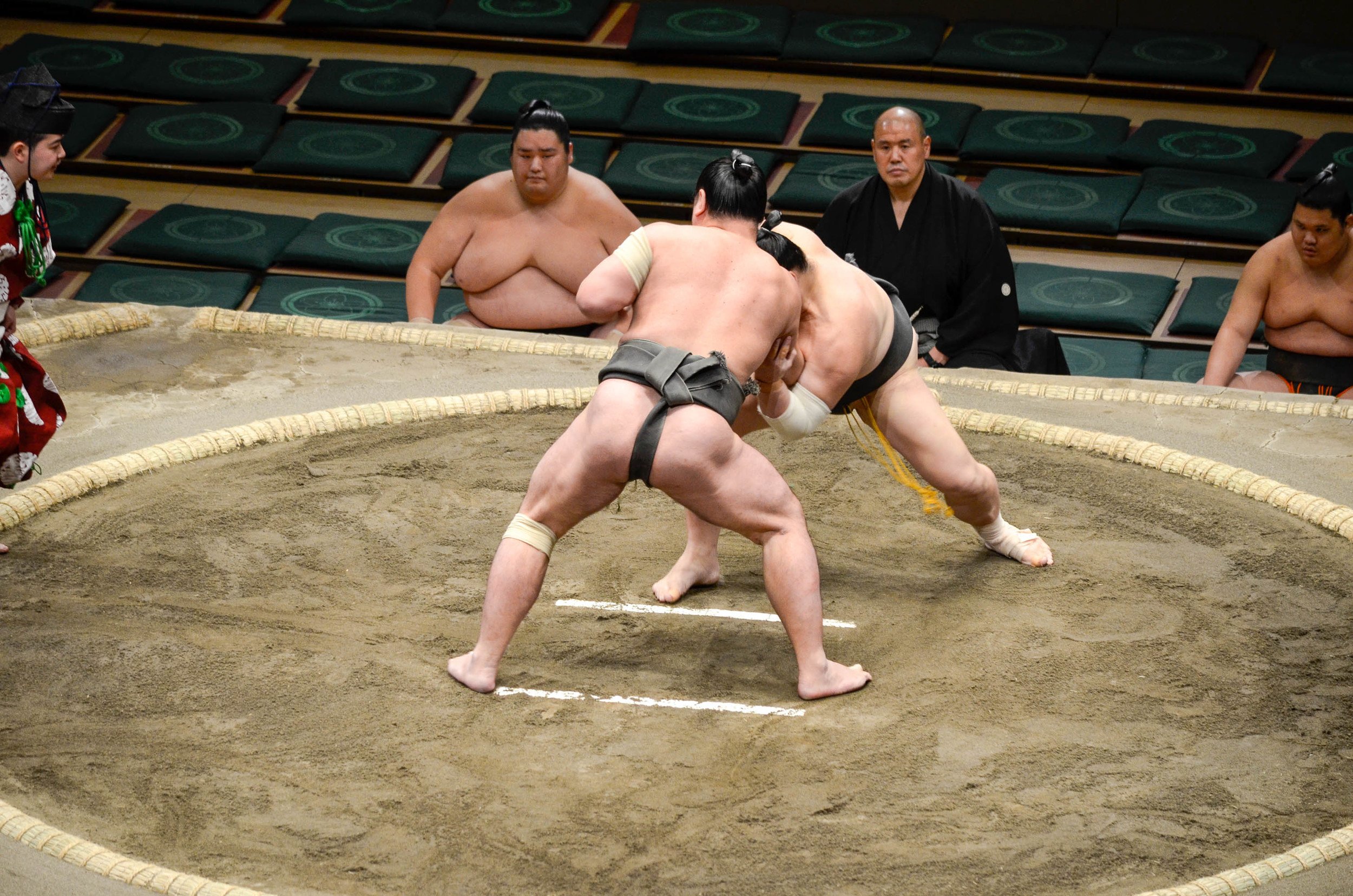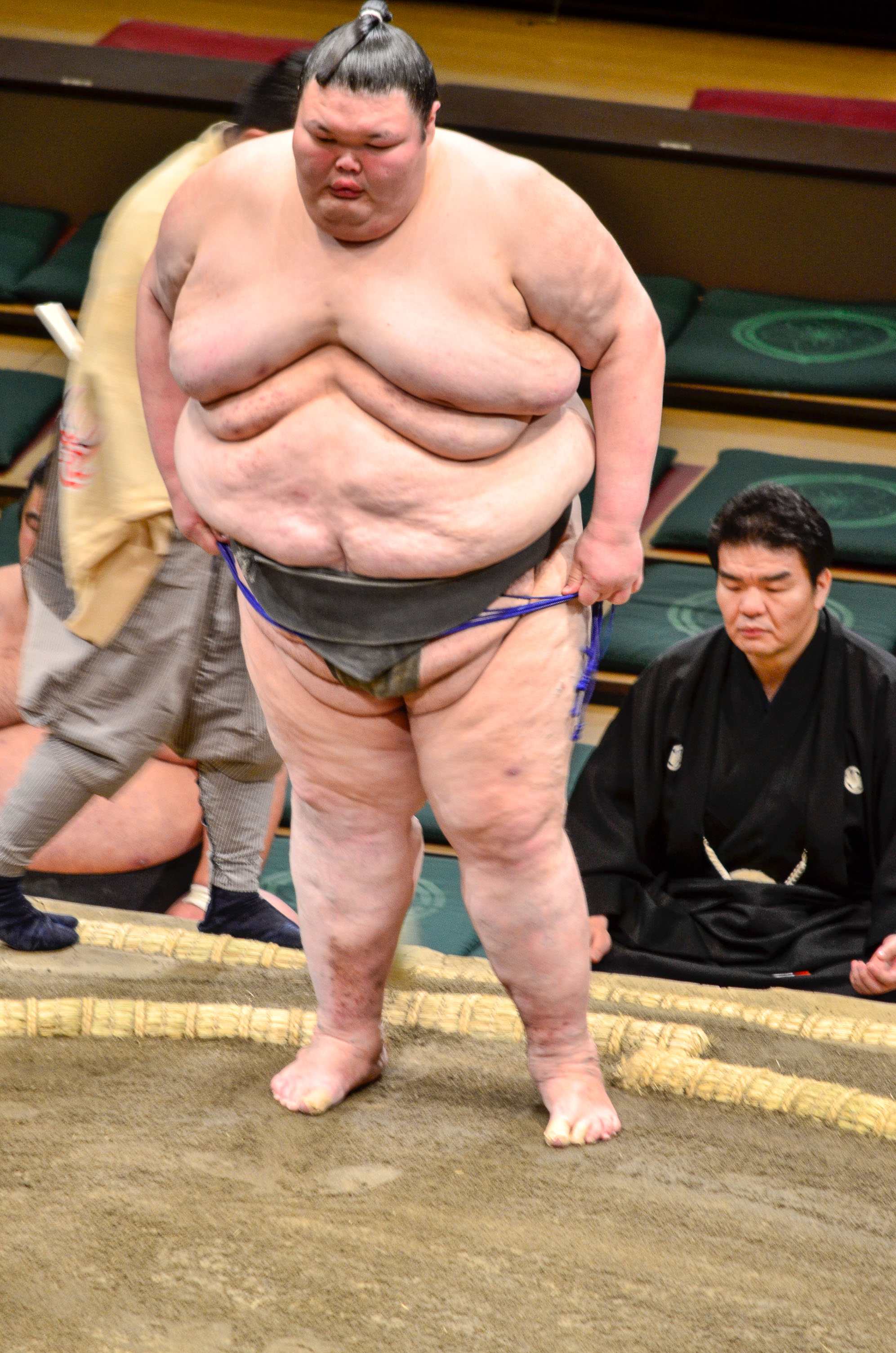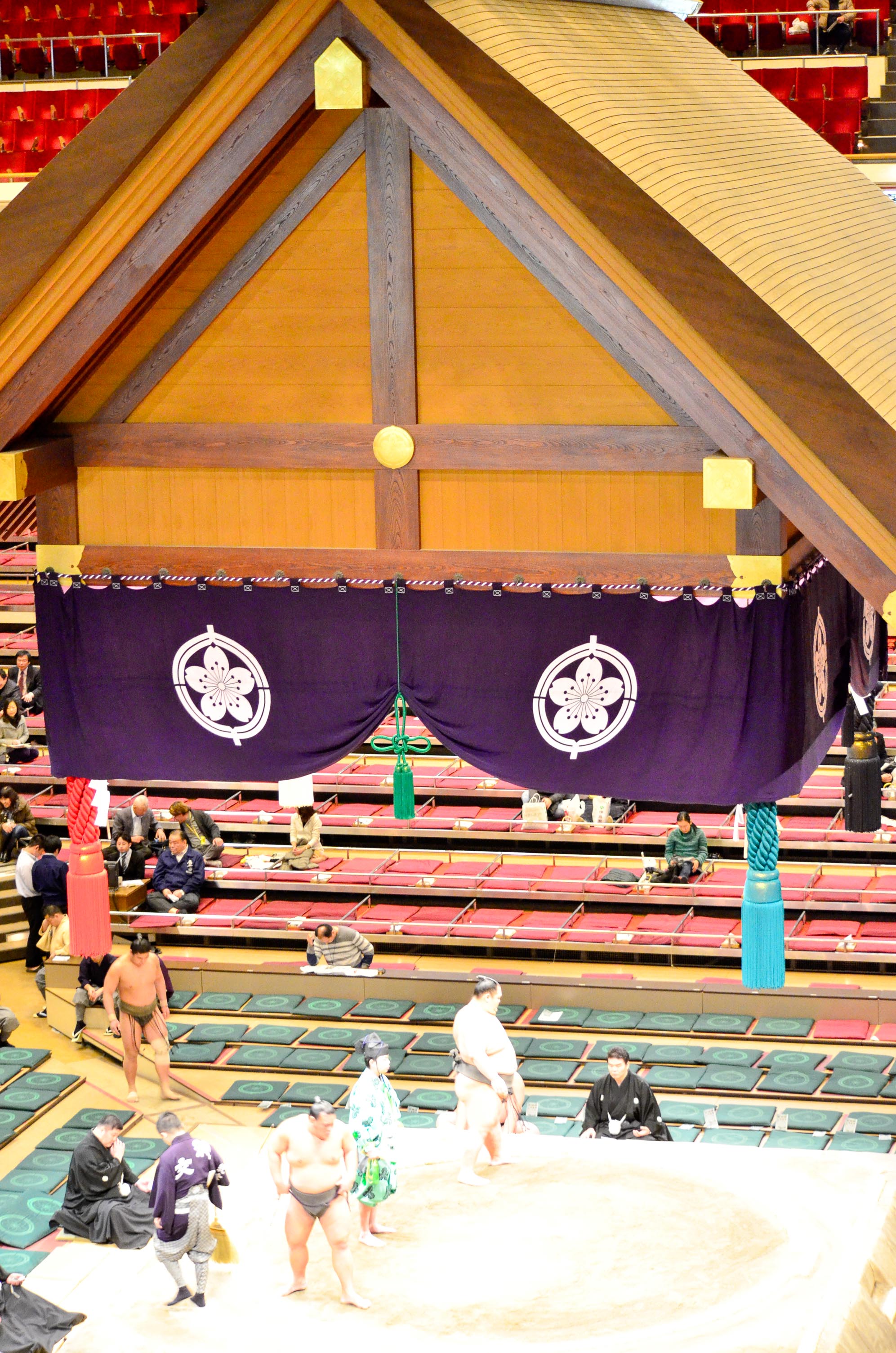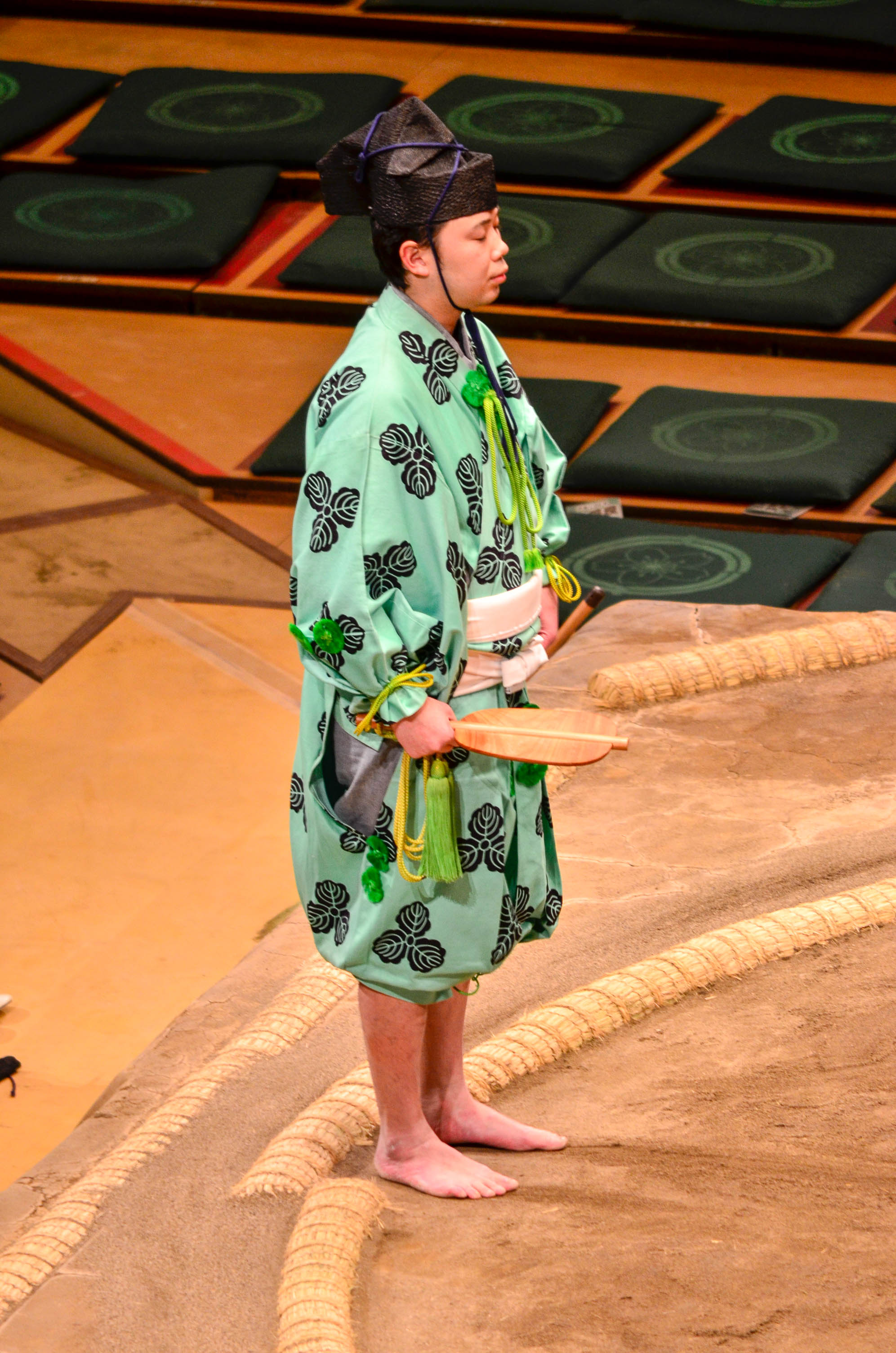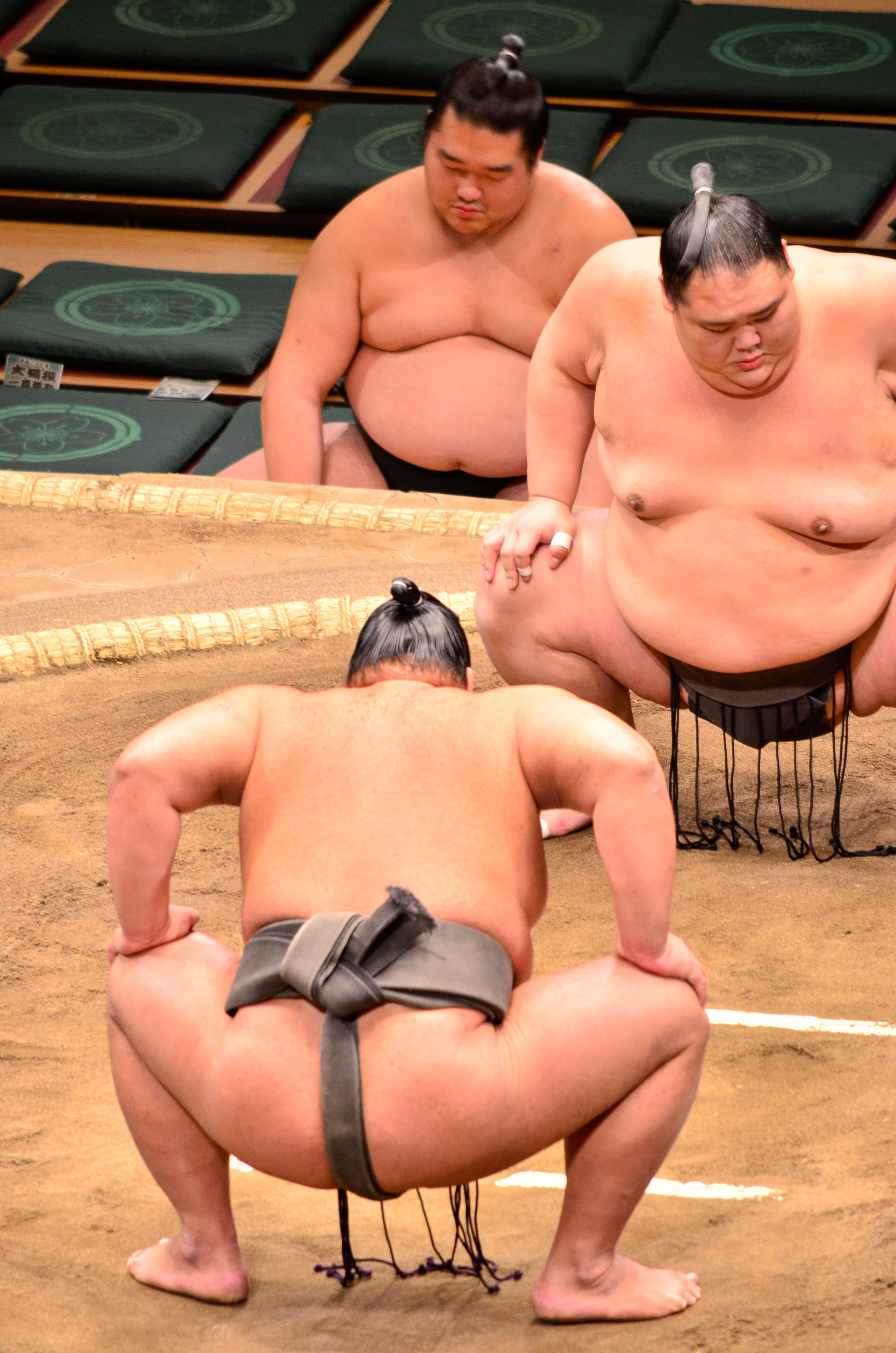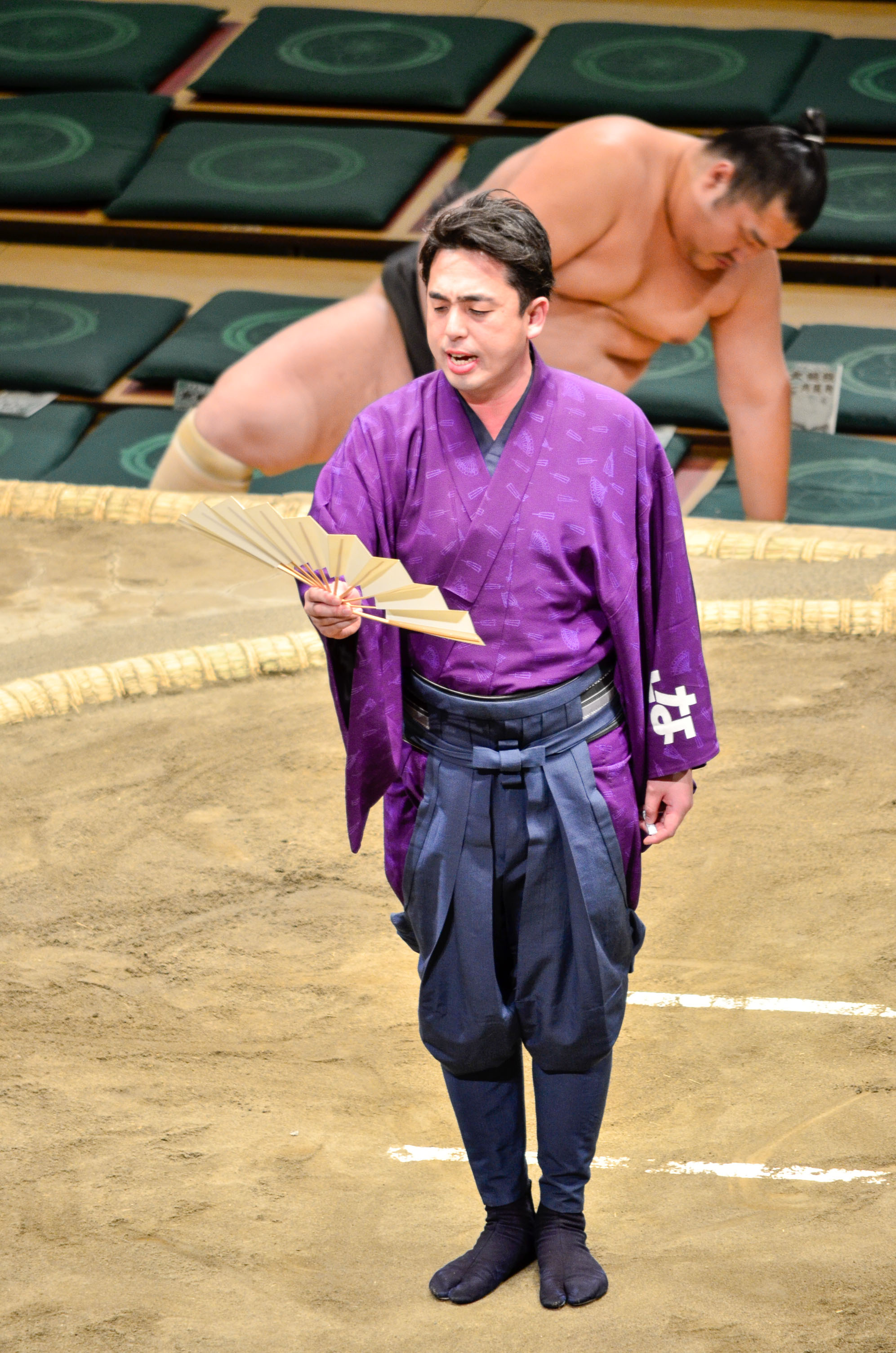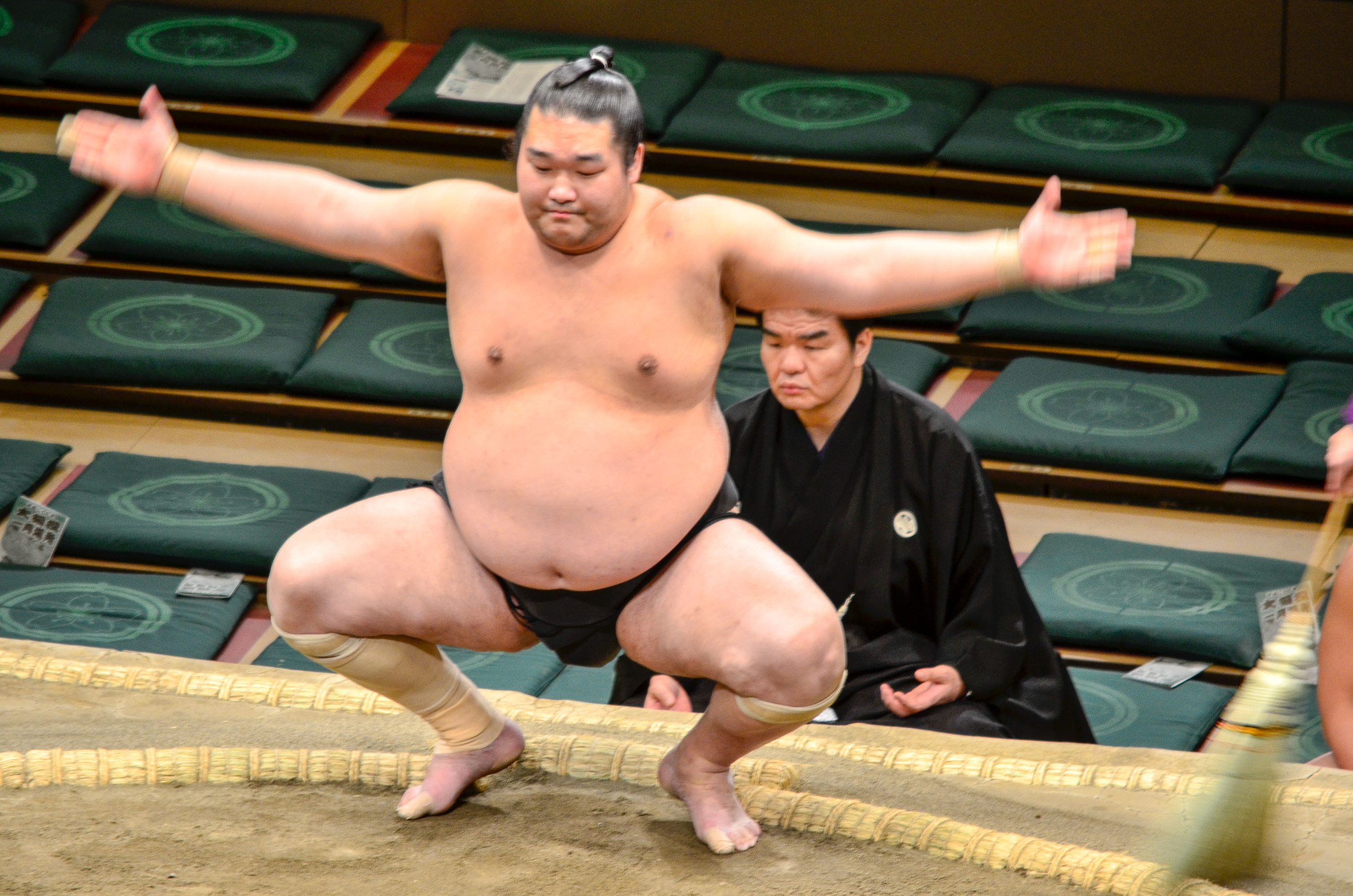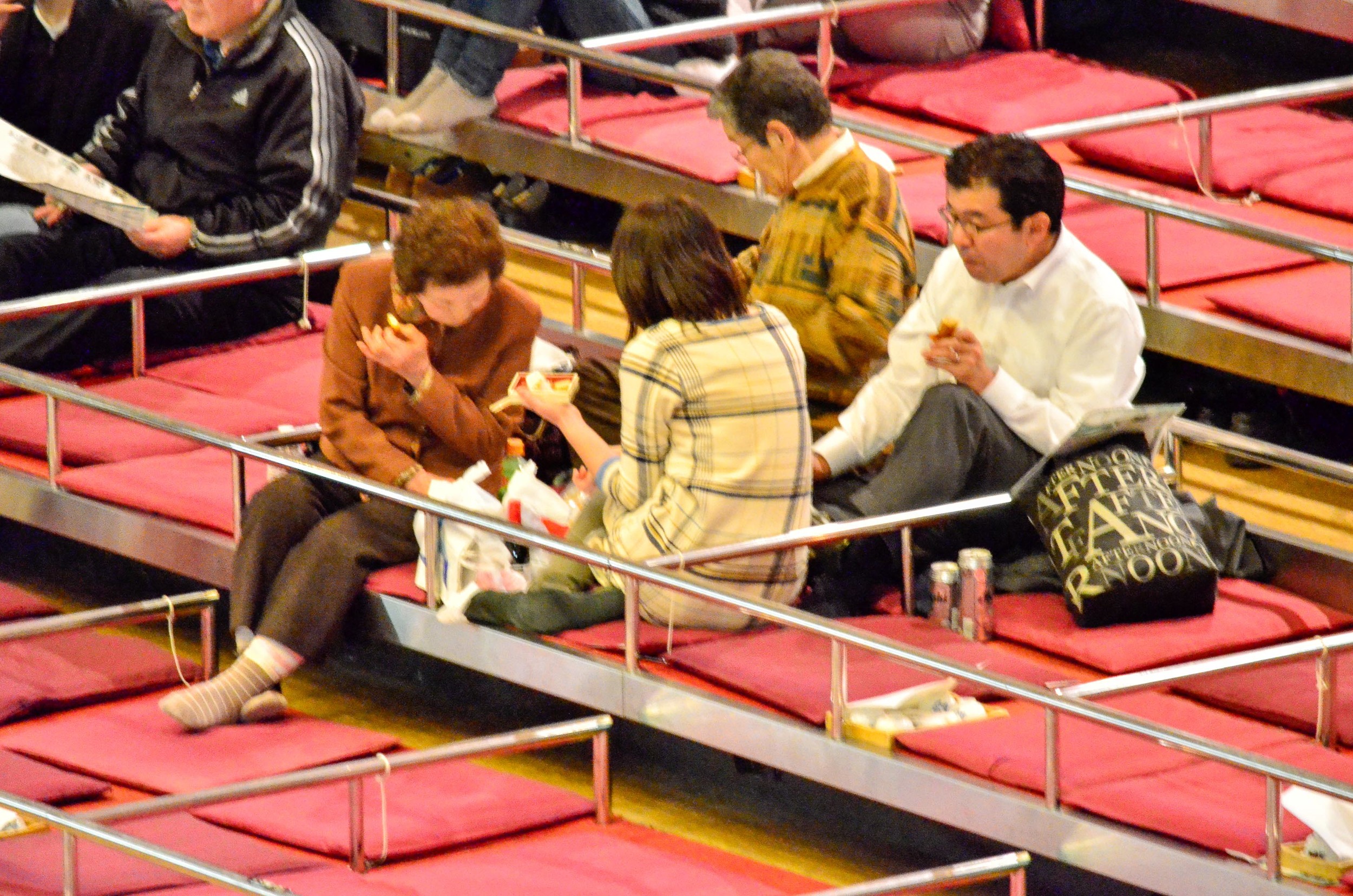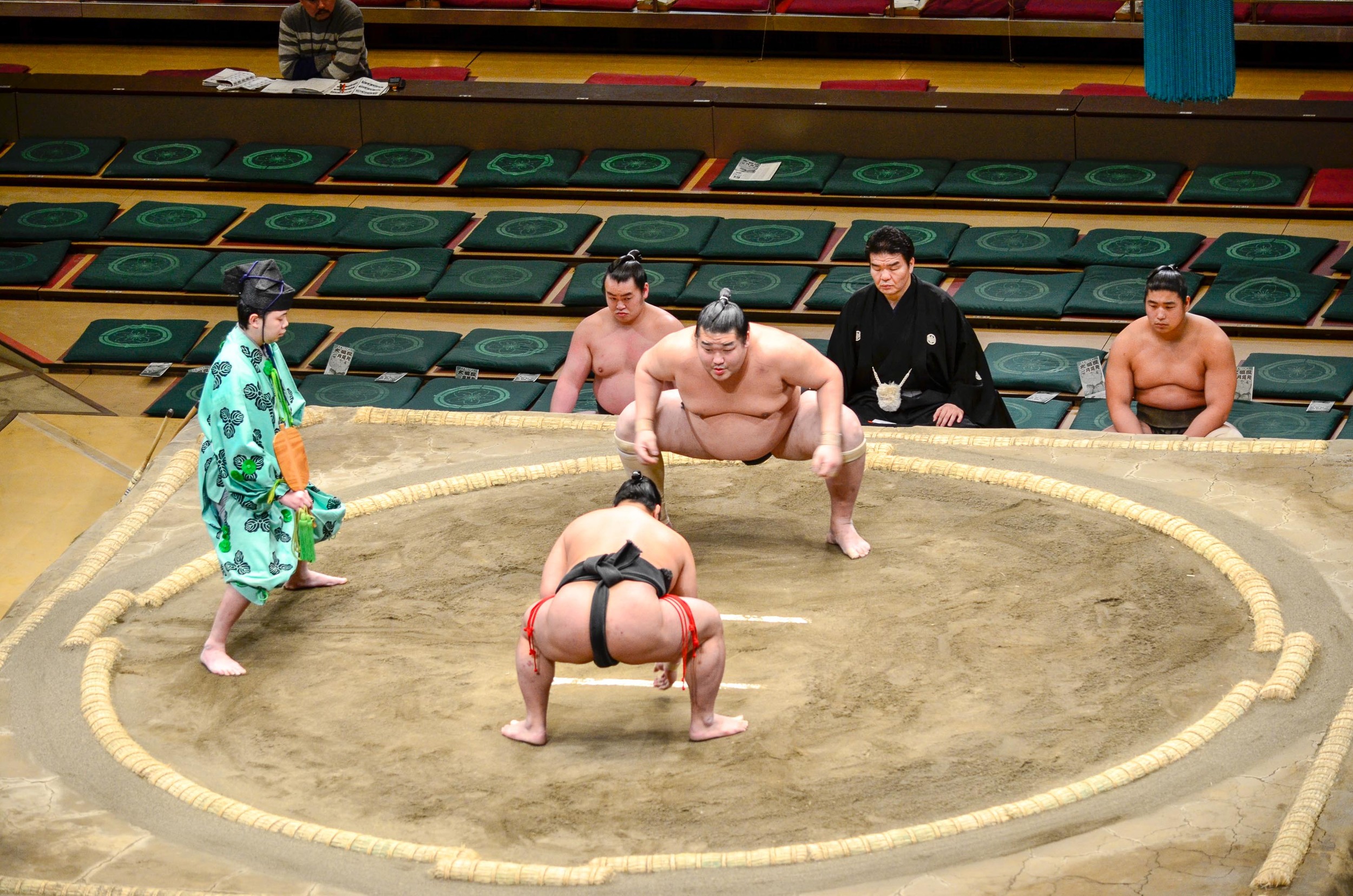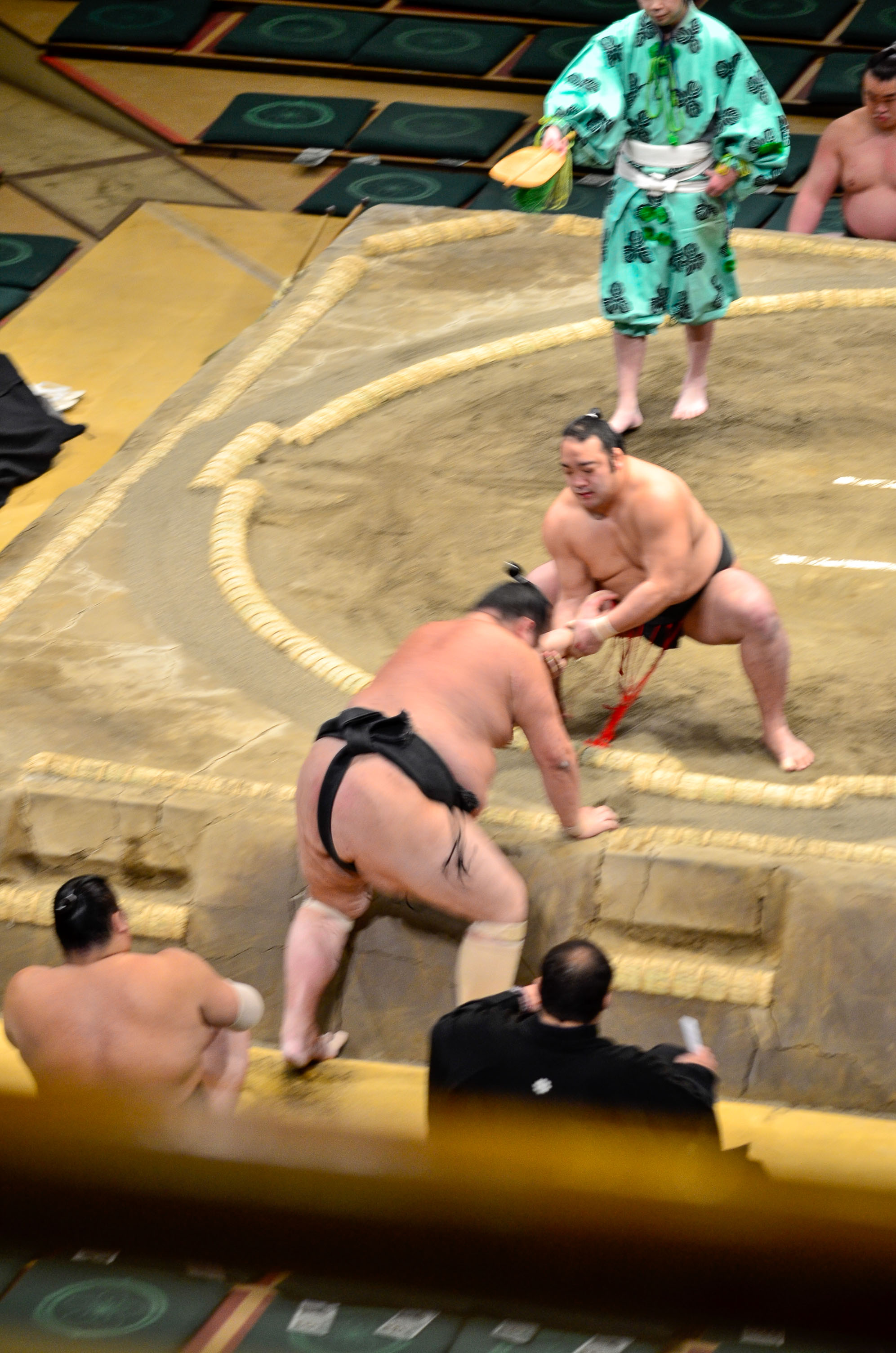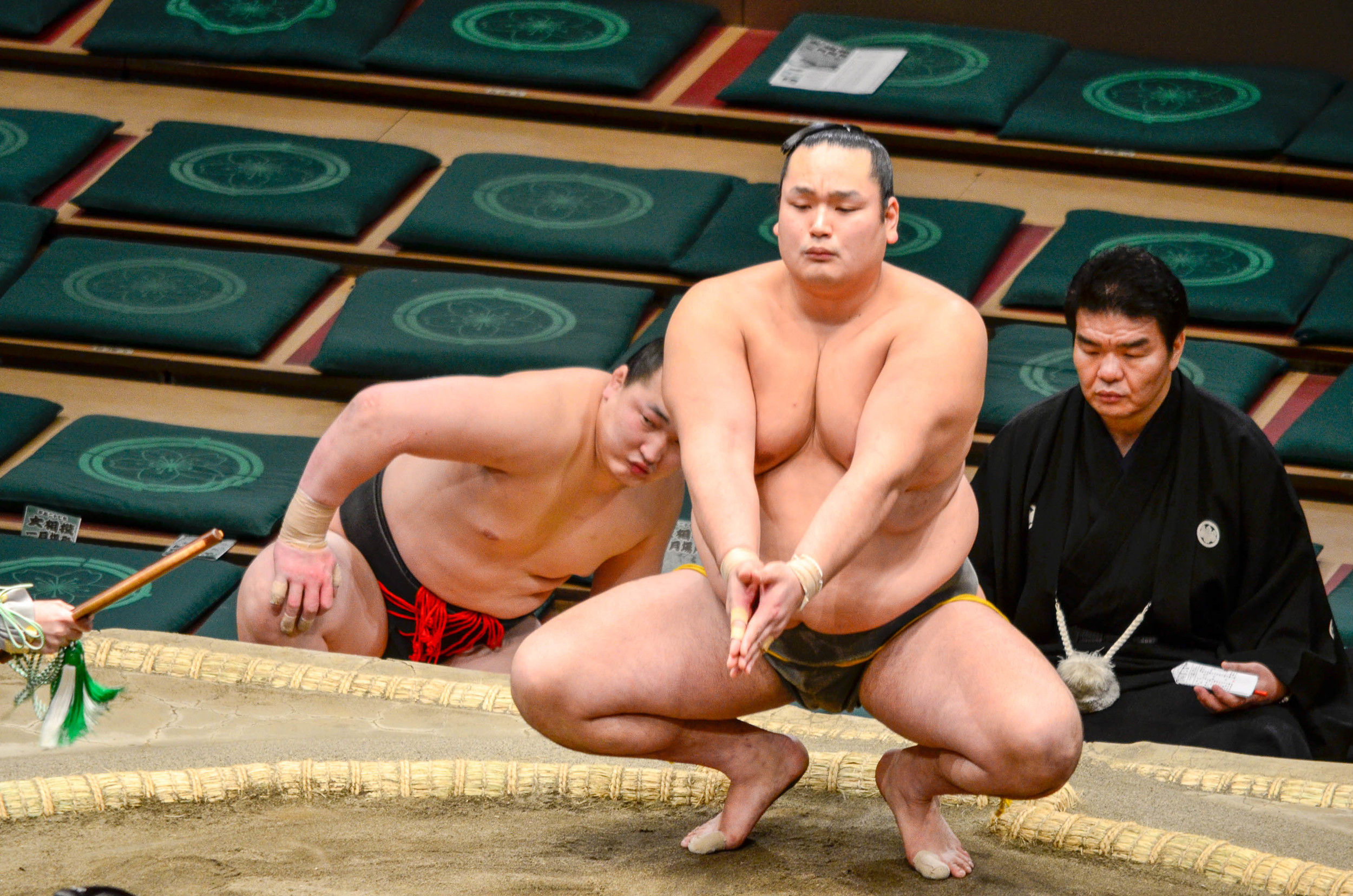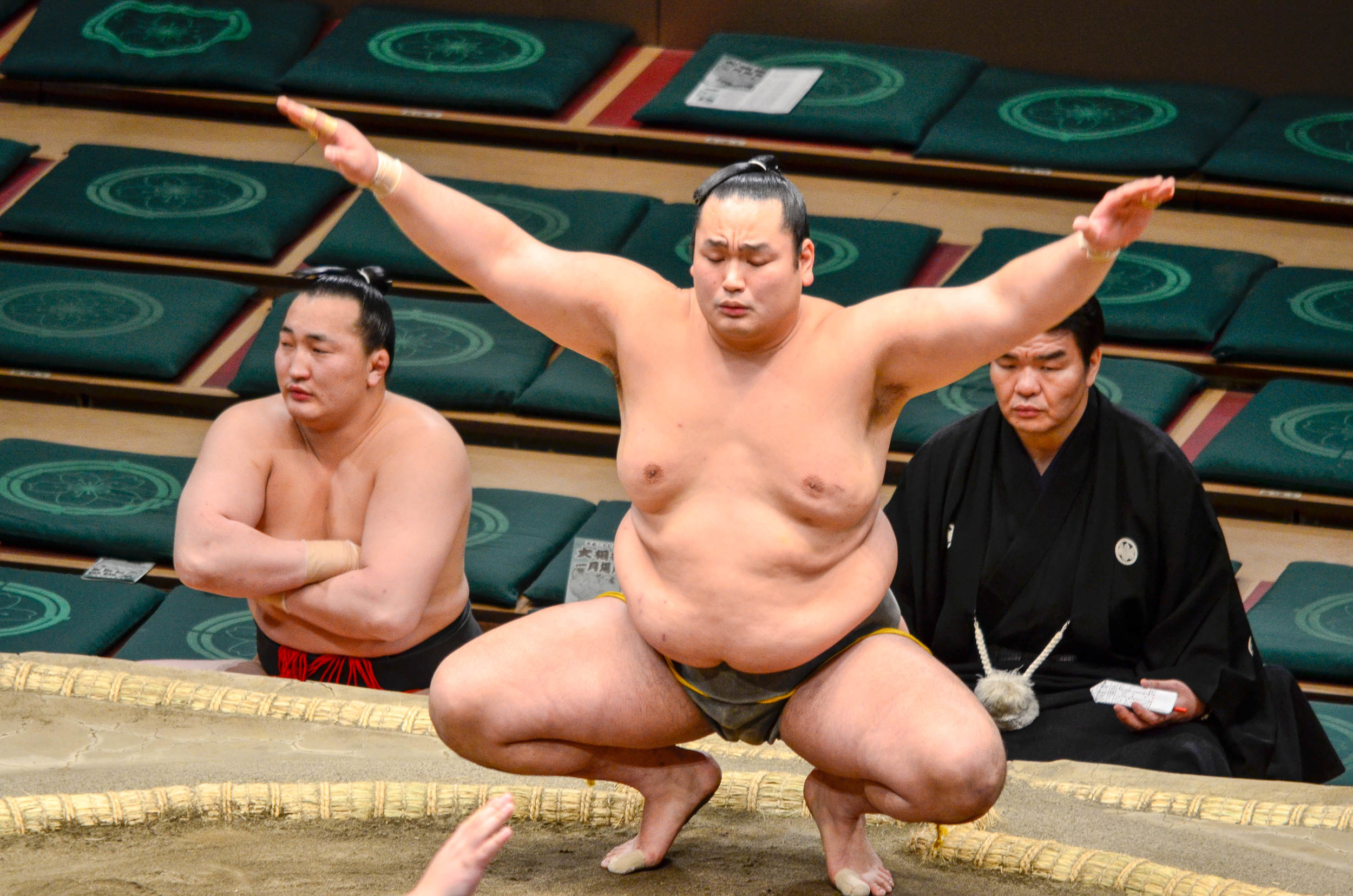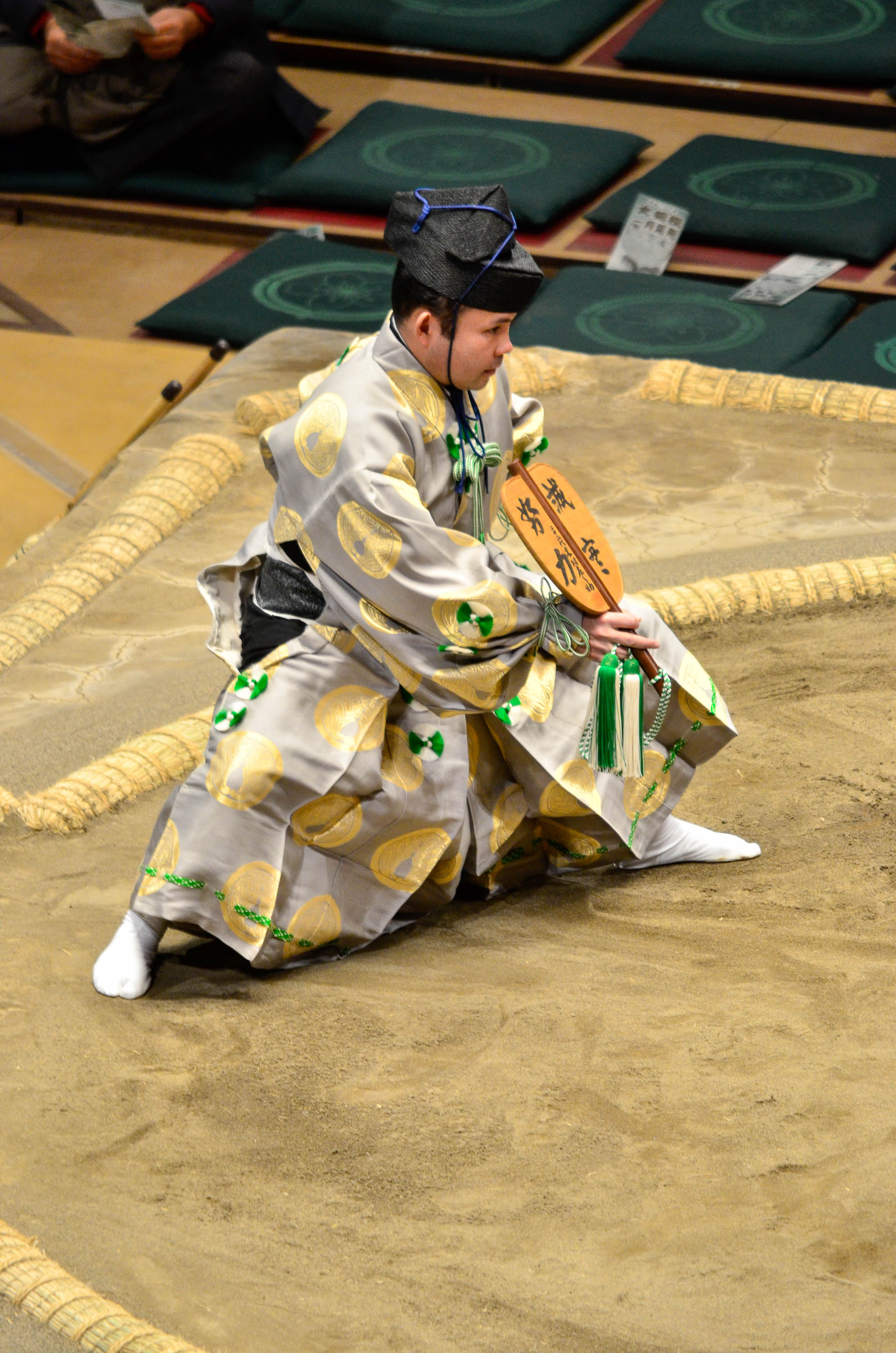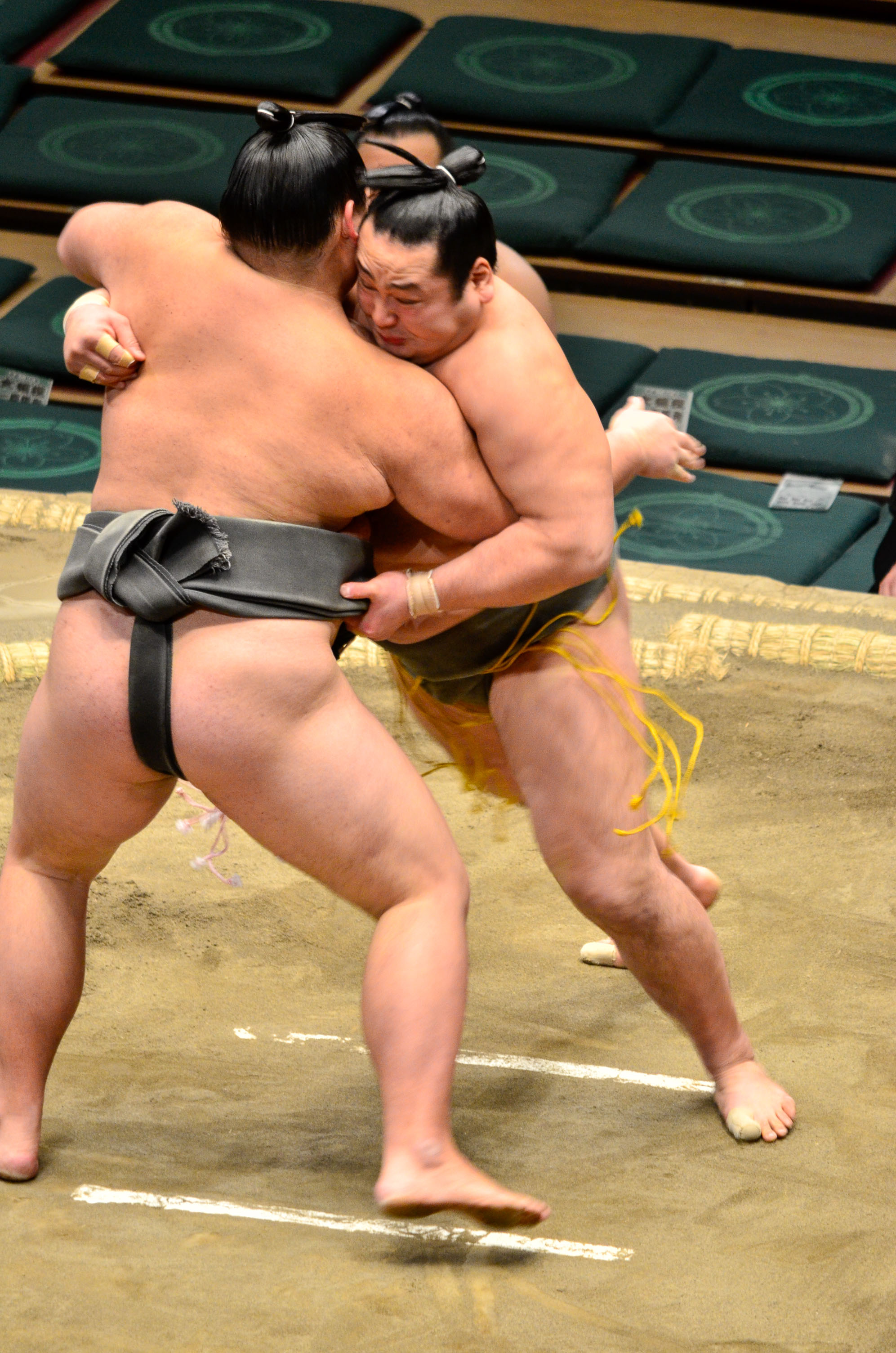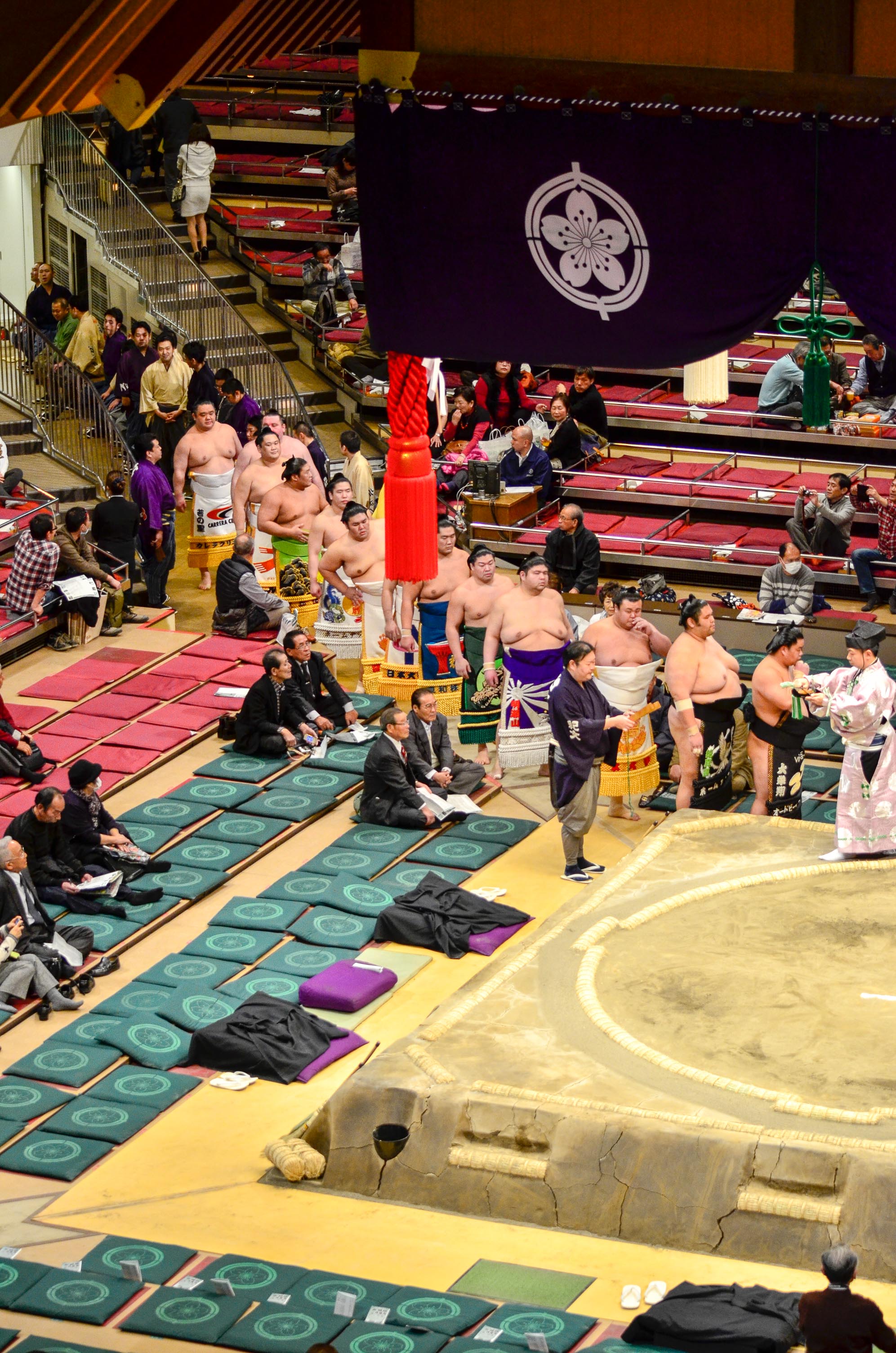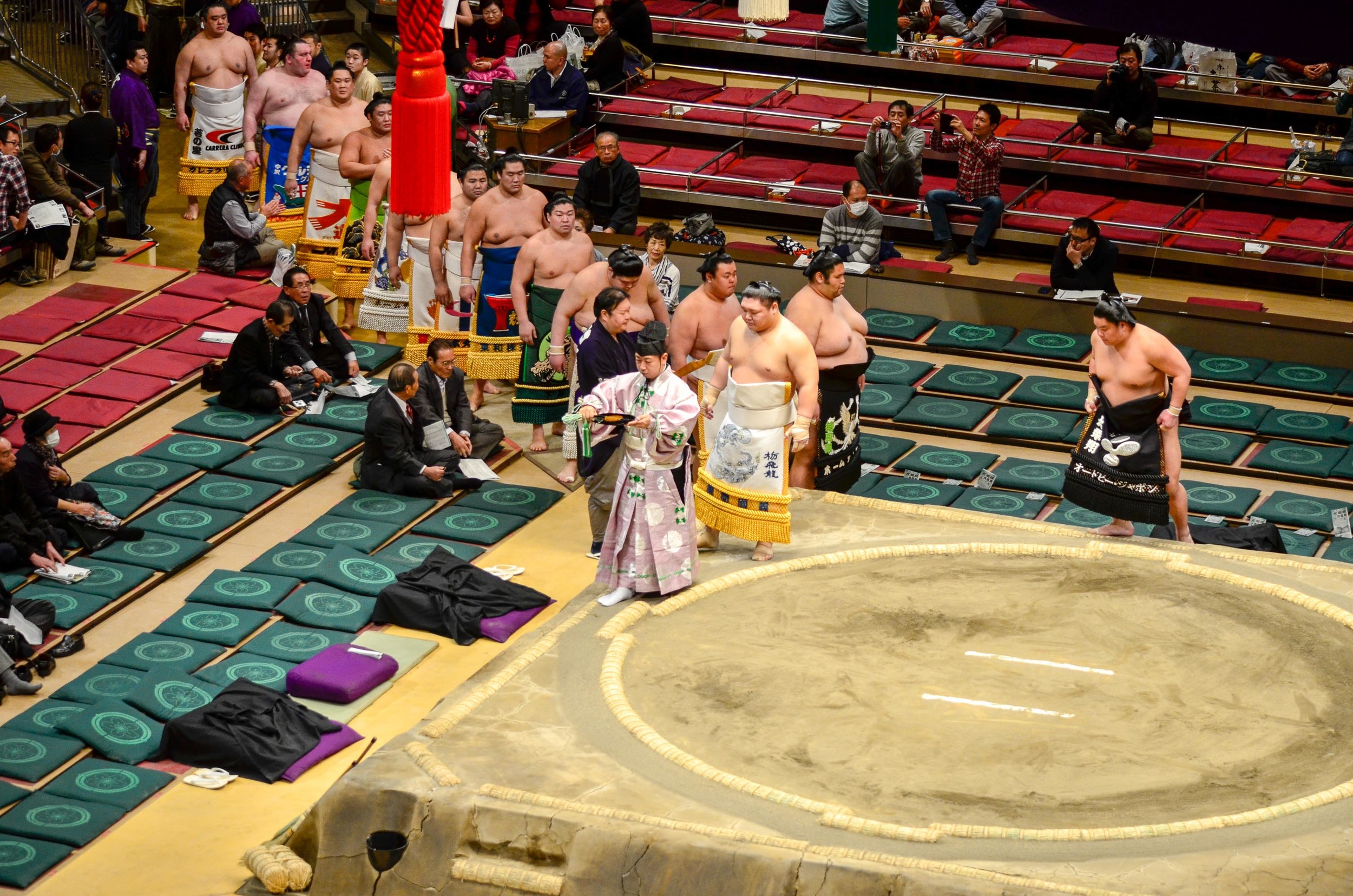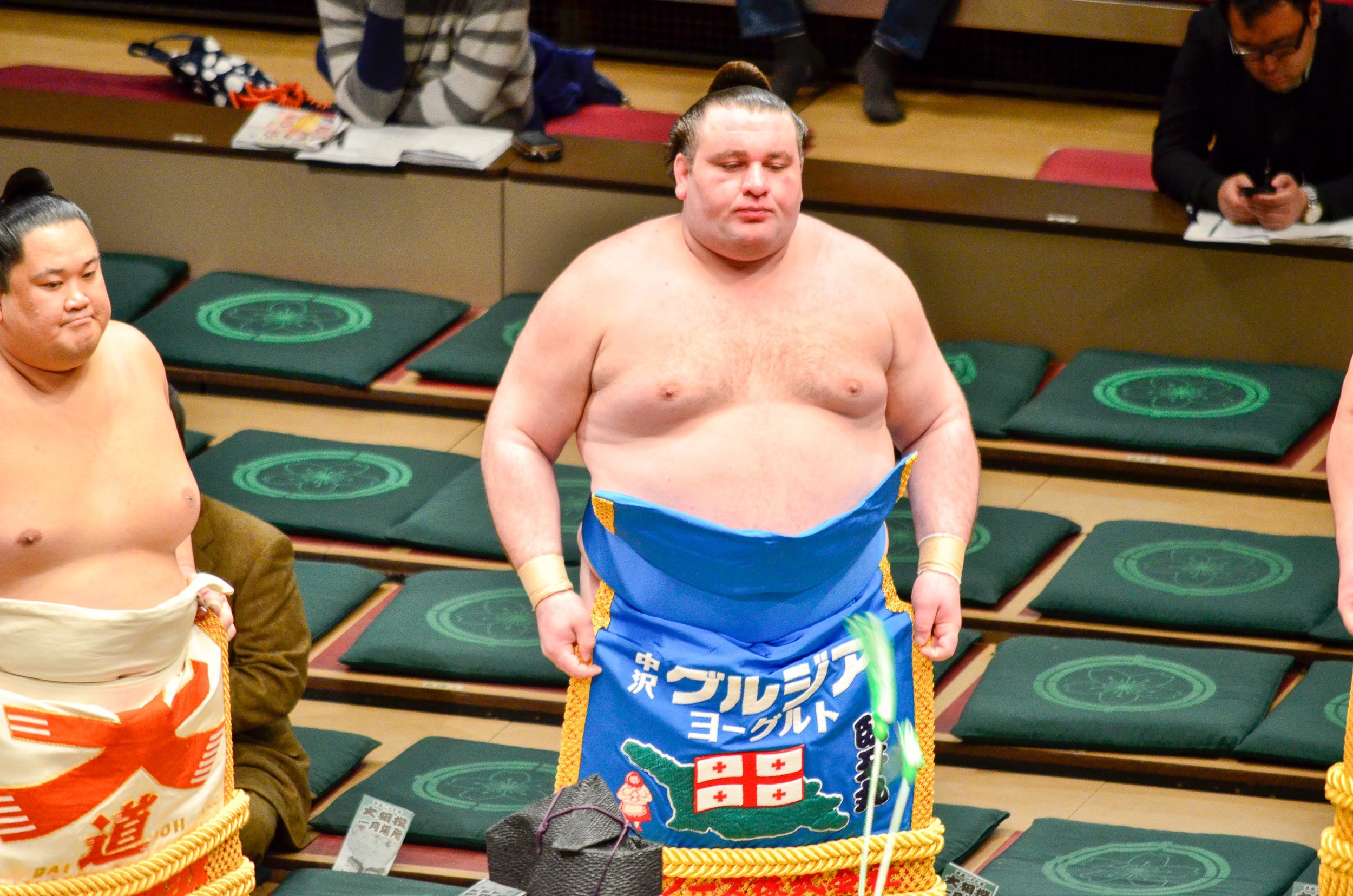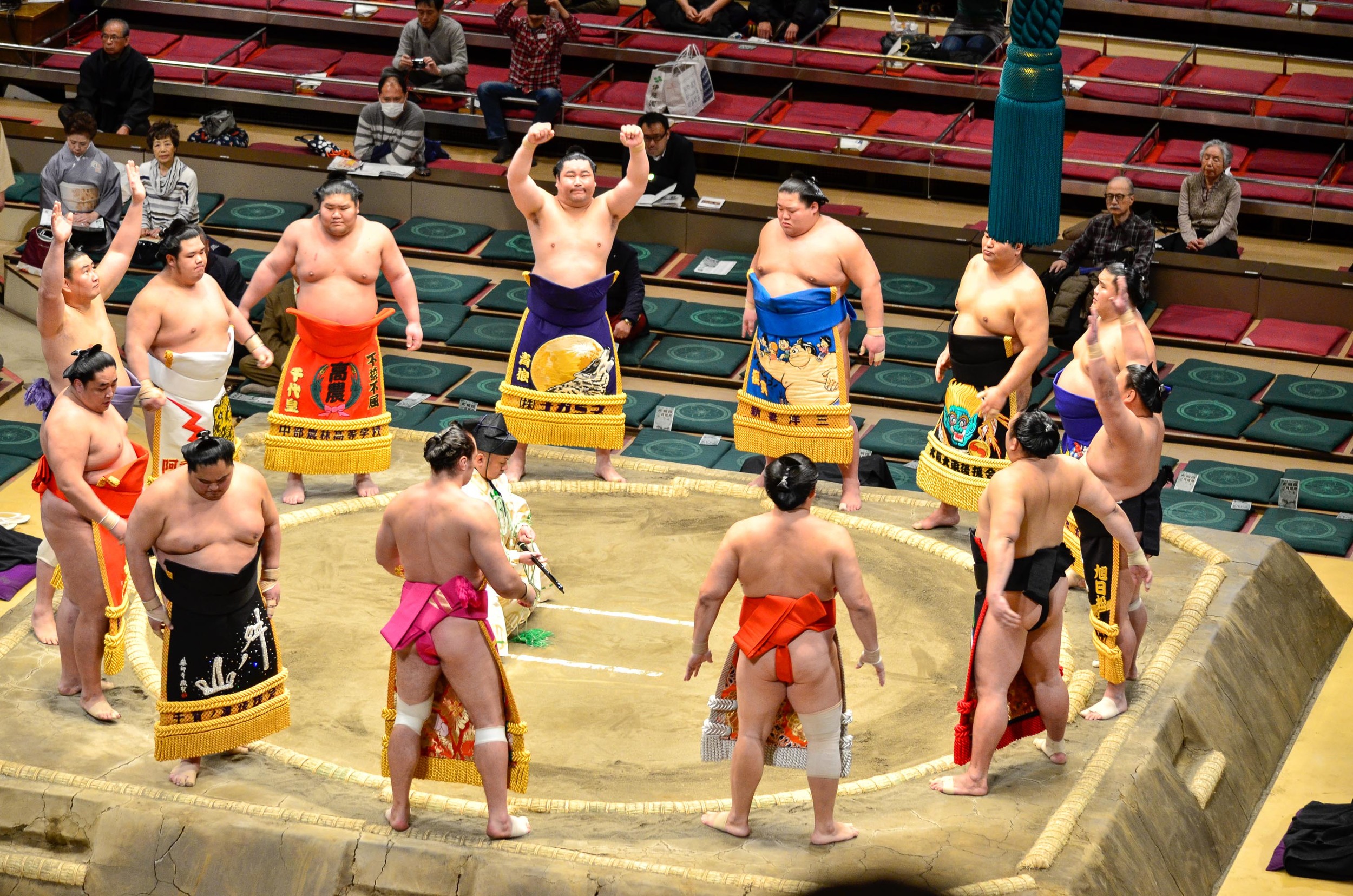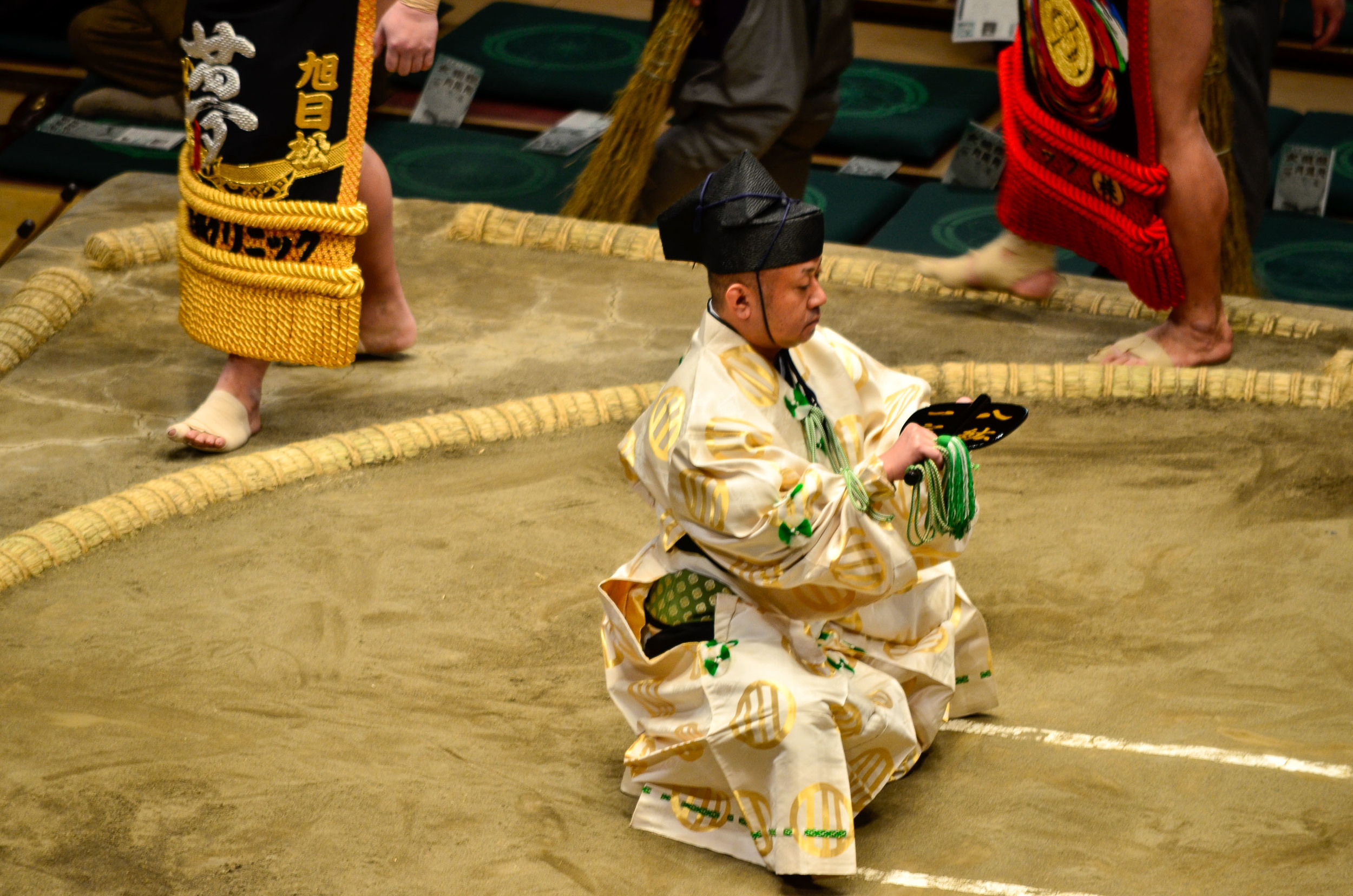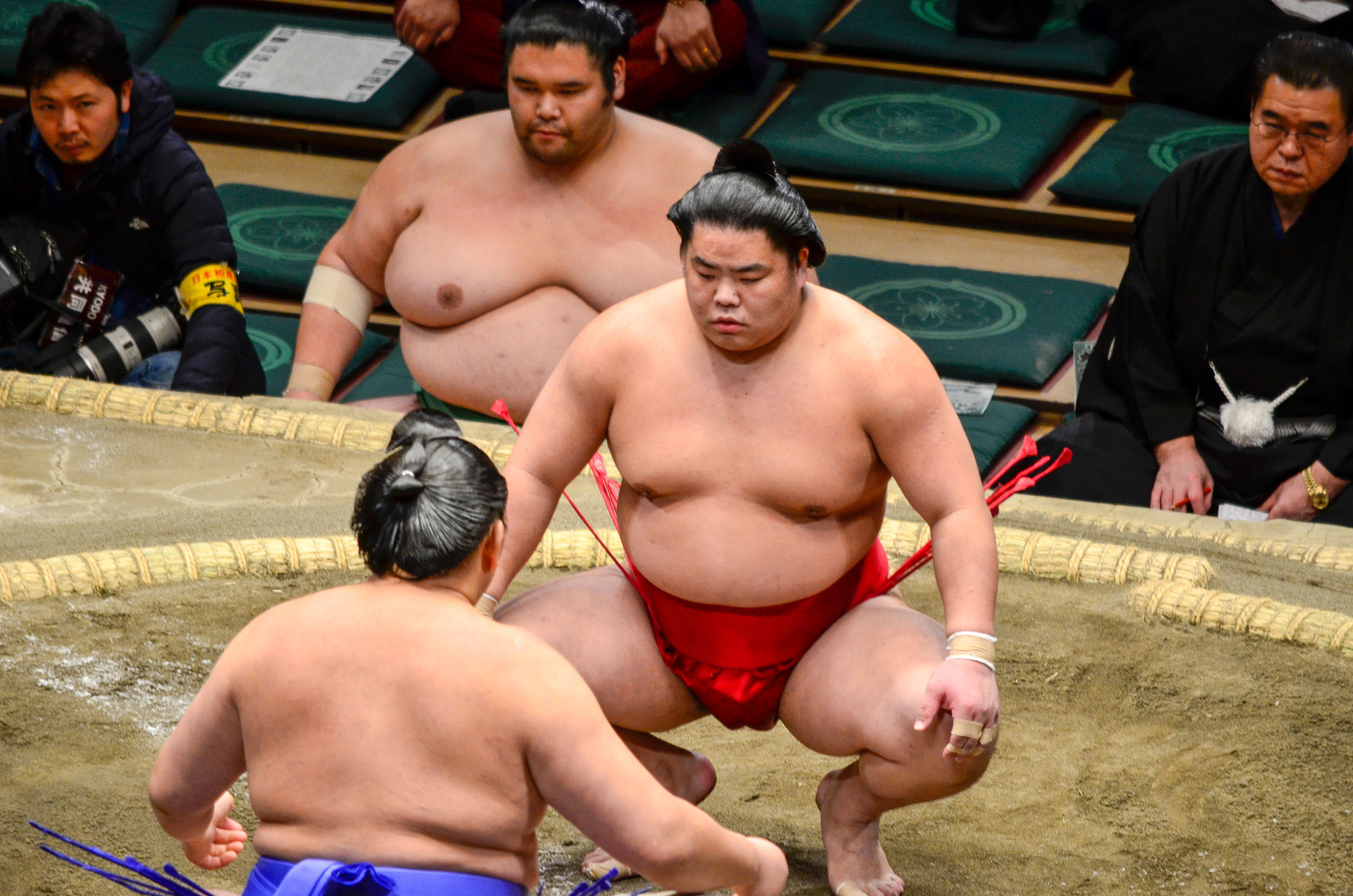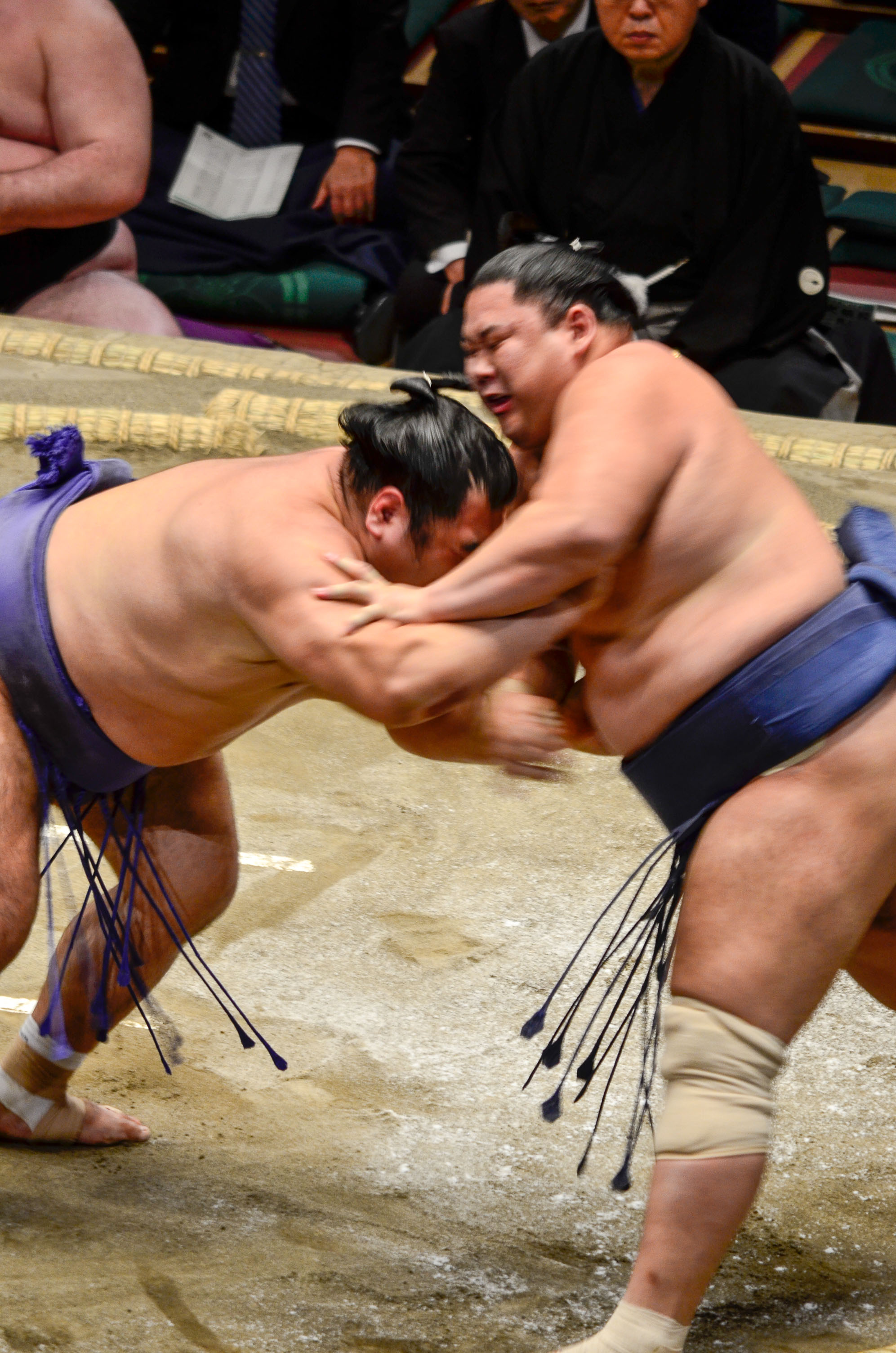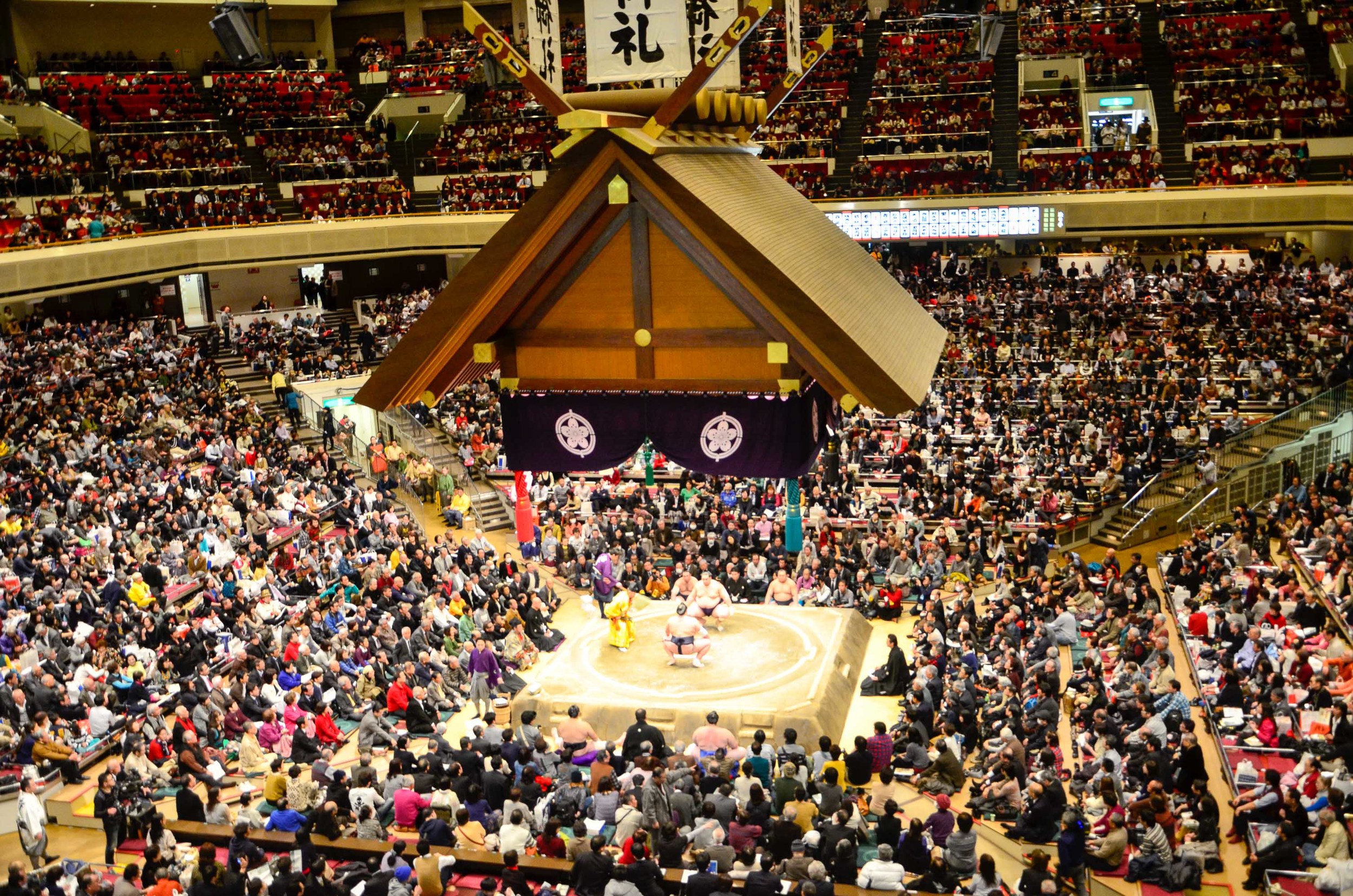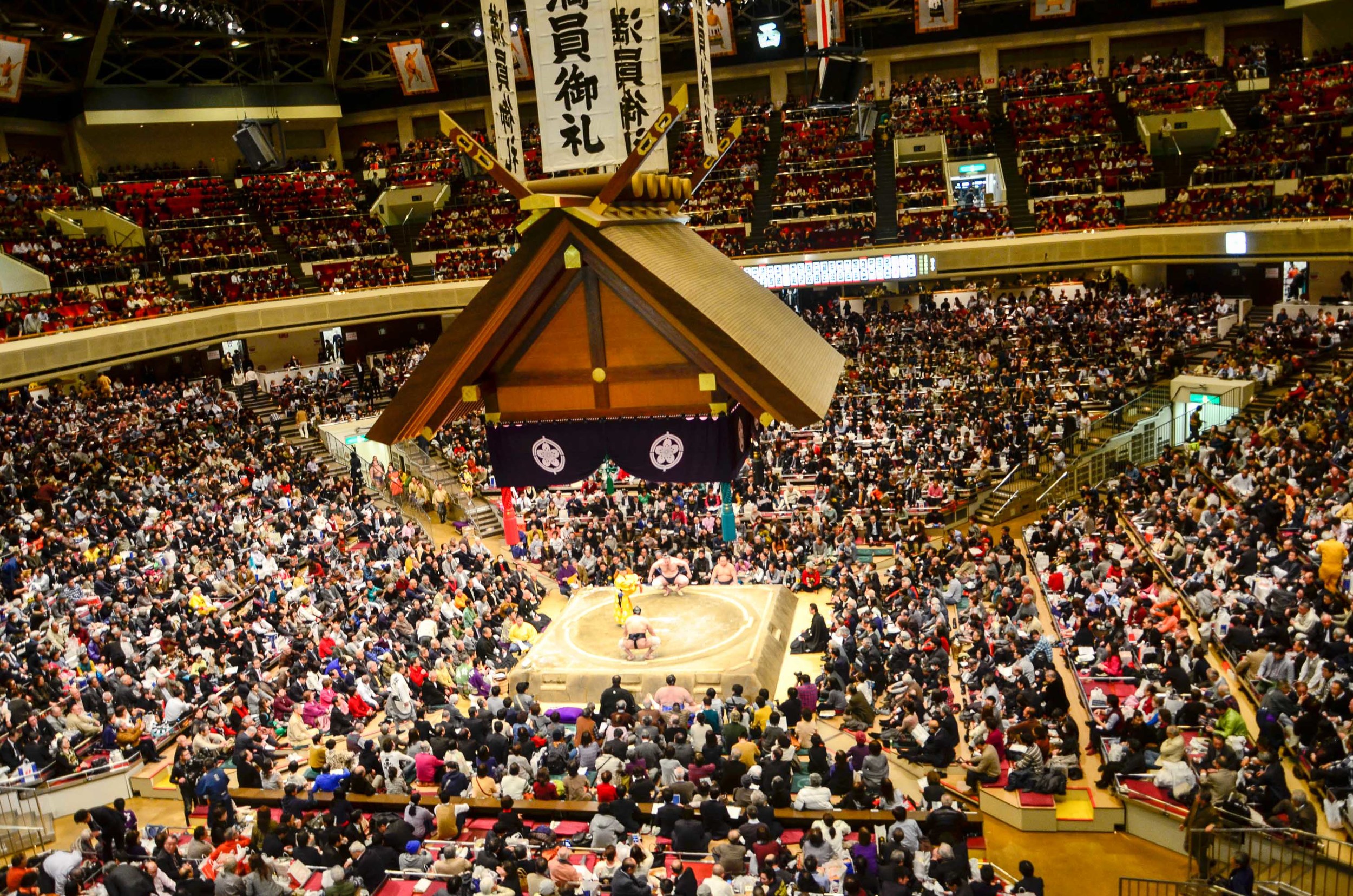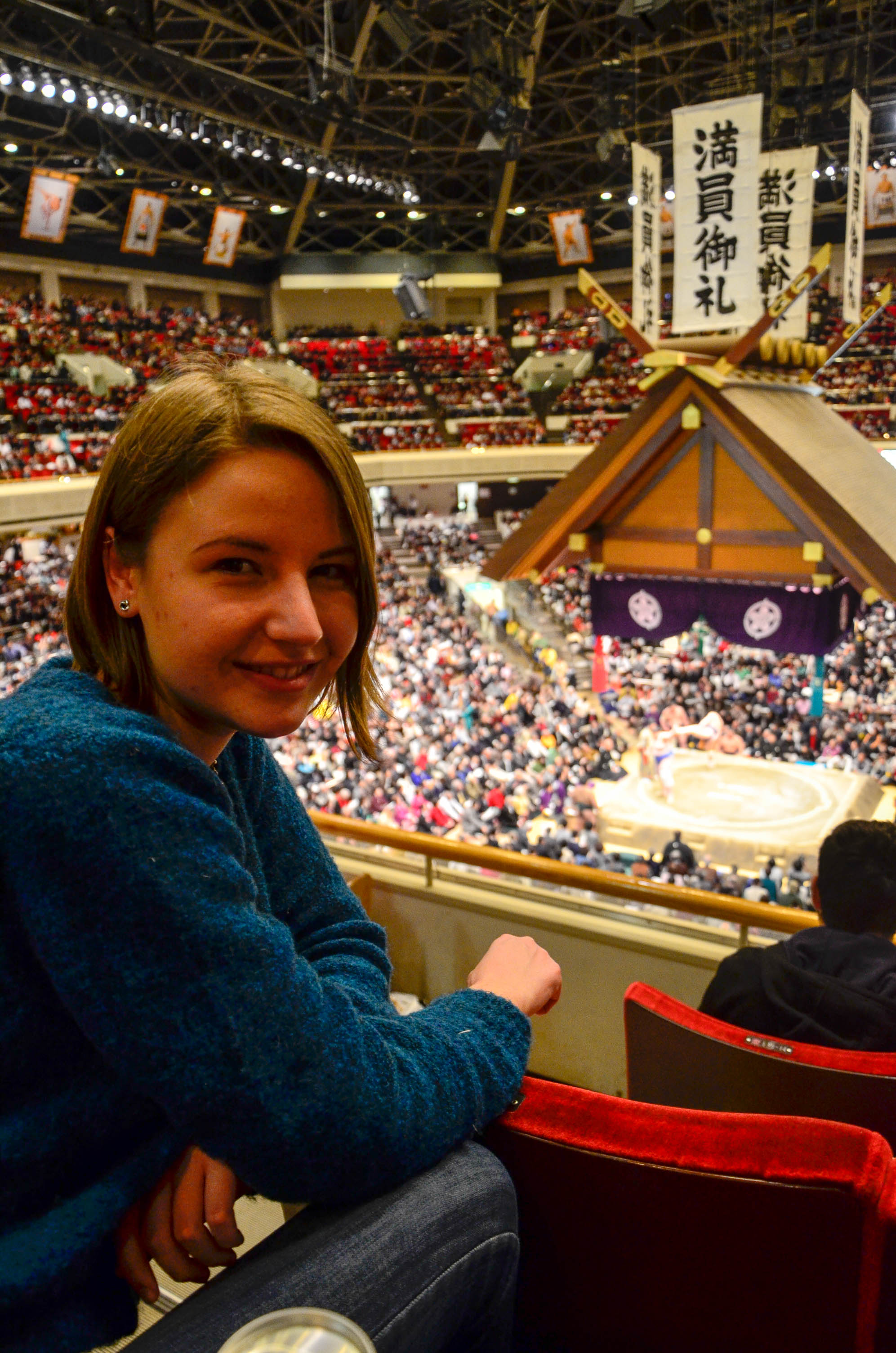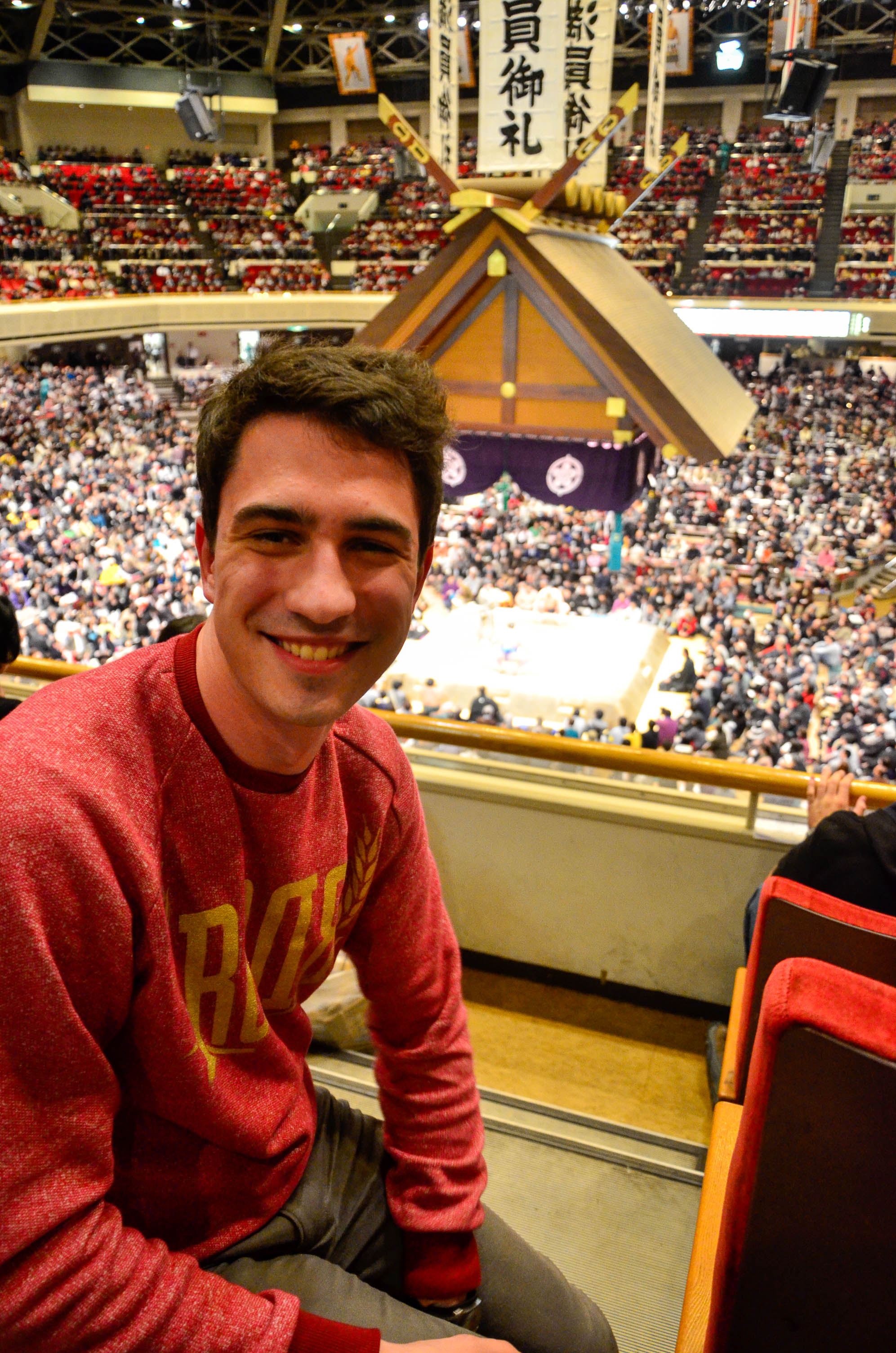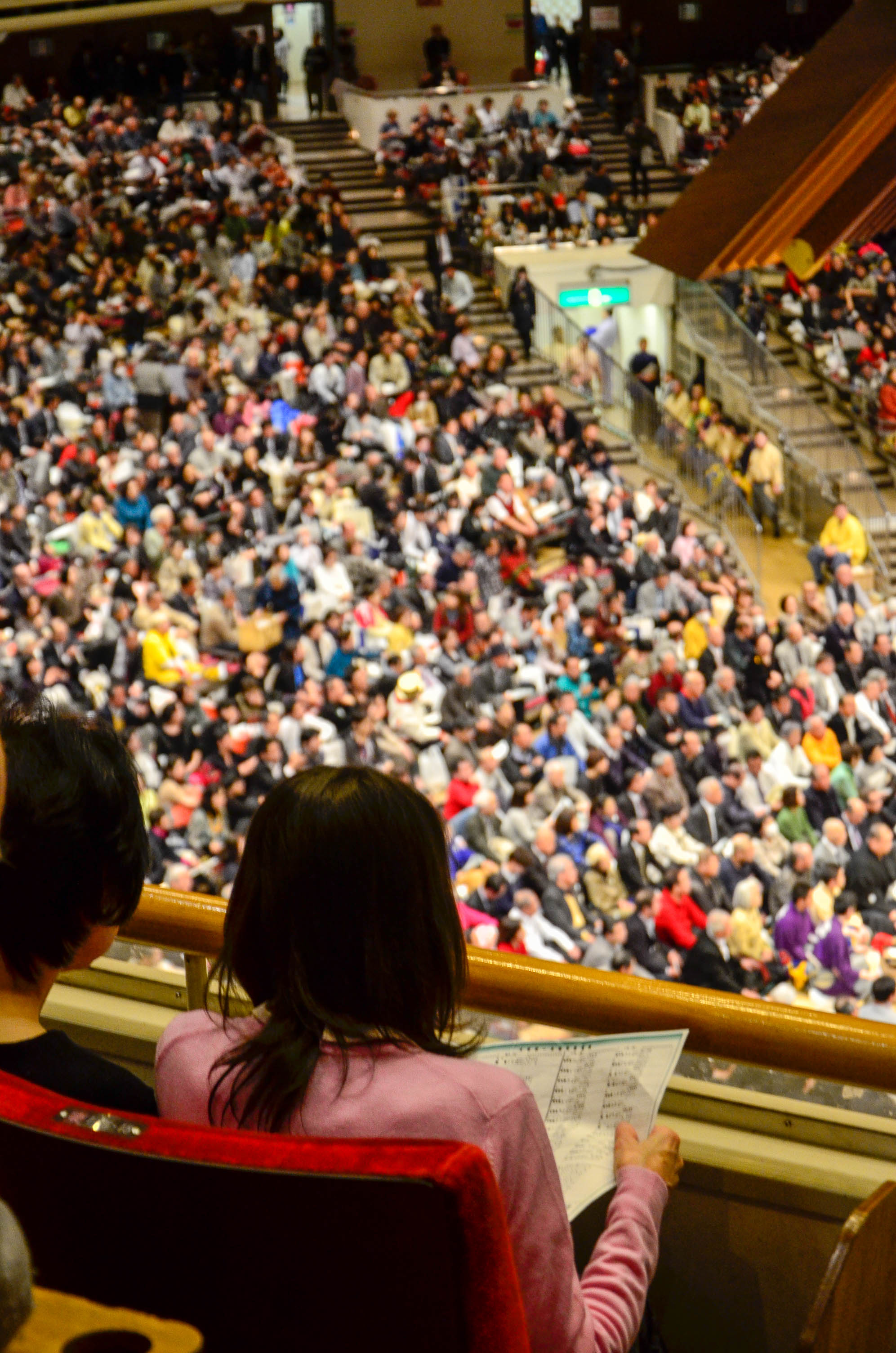Japan has its many surprises. Whereas it is the food that astonishes you, or the way they package things, or the way they do regular, human stuff - I am sure that at any point a person visiting or even living in Japan, but not born here, would have a moment that just opened their mouth and only sounds of amazement came out.
Sumo is quintessentially Japanese. It is a sport of tradition and respect - those two things are definitive. Competitiveness is present, but it must give way to the aforementioned rules - respect the tradition and respect your opponent. In virtually any competitive sport you will see a celebrating sportsman at the end of the performed activity. Celebration is natural, but it does not happen in sumo. Fighters just show no emotion - either they are not allowed to, or they are not willing to, but it does make sense, after all. Before, during and especially after the fight, the face of a sumo fighter is concentrated, emotionless and serious. This is what impressed me the most - the amount of self-control that was in the hall.
This sport is also unique because of its ties to religion. The ring - dohyō (土俵) - is considered to be a sacred place and is made only from sand. It is truly amazing how they manage to support a lot of heavy-body movement of, what looks like, a cracked and fragile sand structure. See the picture below.
Before each fight, sumo wrestlers perform a specific ritual. It is undoubtedly very interesting, but what I found the most interesting is the 'sand-throwing'. Essentially, it is a tradition that takes its roots in religion and is meant to fear away the ghosts from the sacred ring. Fascinating.
Overall, a day spent watching some very heavy men fight turned out to be a lot more interesting than I thought it would be. Despite the high price, this is a thing to do in Japan - more than anything else. You can not get anything more Japanese than Sumo.
